Analysis of Long-Term Depression in the Purkinje Cell
- 格式:pdf
- 大小:1.43 MB
- 文档页数:8
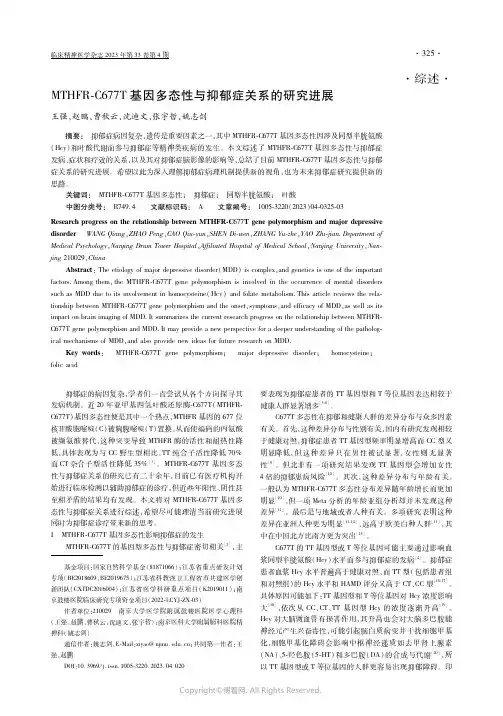
·综述·MTHFR C677T基因多态性与抑郁症关系的研究进展王强,赵鹏,曹秋云,沈迪文,张宇哲,姚志剑摘要: 抑郁症病因复杂,遗传是重要因素之一,其中MTHFR C677T基因多态性因涉及同型半胱氨酸(Hcy)和叶酸代谢而参与抑郁症等精神类疾病的发生。
本文综述了MTHFR C677T基因多态性与抑郁症发病、症状和疗效的关系,以及其对抑郁症脑影像的影响等,总结了目前MTHFR C677T基因多态性与抑郁症关系的研究进展。
希望以此为深入理解抑郁症病理机制提供新的视角,也为未来抑郁症研究提供新的思路。
关键词: MTHFR C677T基因多态性; 抑郁症; 同型半胱氨酸; 叶酸中图分类号: R749 4 文献标识码: A 文章编号: 1005 3220(2023)04 0325 03ResearchprogressontherelationshipbetweenMTHFR C677Tgenepolymorphismandmajordepressivedisorder WANGQiang,ZHAOPeng,CAOQiu yun,SHENDi wen,ZHANGYu zhe,YAOZhi jian.DepartmentofMedicalPsychology,NanjingDrumTowerHospital,AffiliatedHospitalofMedicalSchool,NanjingUniversity,Nanjing210029,ChinaAbstract:Theetiologyofmajordepressivedisorder(MDD)iscomplex,andgeneticsisoneoftheimportantfactors.Amongthem,theMTHFR C677TgenepolymorphismisinvolvedintheoccurrenceofmentaldisorderssuchasMDDduetoitsinvolvementinhomocysteine(Hcy)andfolatemetabolism.ThisarticlereviewstherelationshipbetweenMTHFR C677Tgenepolymorphismandtheonset,symptoms,andefficacyofMDD,aswellasitsimpactonbrainimagingofMDD.ItsummarizesthecurrentresearchprogressontherelationshipbetweenMTHFR C677TgenepolymorphismandMDD.Itmayprovideanewperspectiveforadeeperunderstandingofthepatholog icalmechanismsofMDD,andalsoprovidenewideasforfutureresearchonMDD.Keywords: MTHFR C677Tgenepolymorphism;majordepressivedisorder;homocysteine;folicacid抑郁症的病因复杂,学者们一直尝试从各个方向探寻其发病机制。
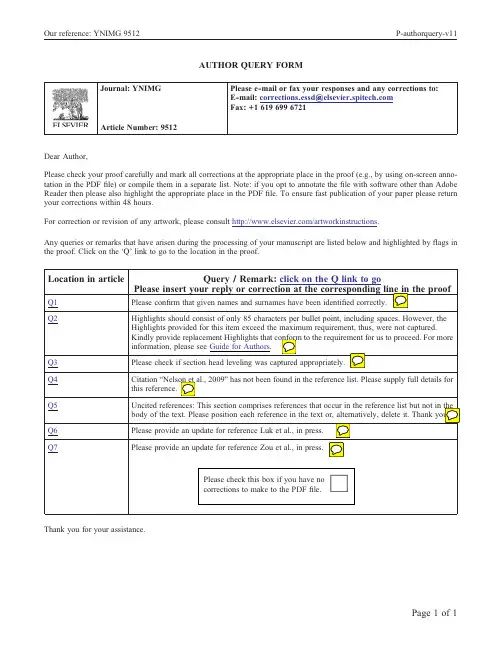
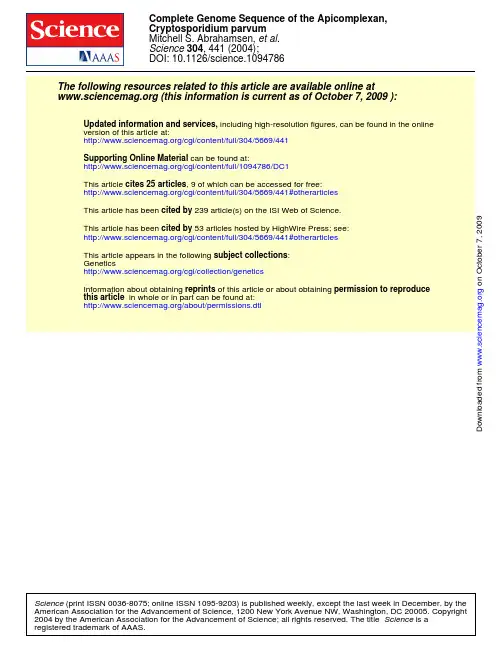
DOI: 10.1126/science.1094786, 441 (2004);304Science et al.Mitchell S. Abrahamsen,Cryptosporidium parvum Complete Genome Sequence of the Apicomplexan, (this information is current as of October 7, 2009 ):The following resources related to this article are available online at/cgi/content/full/304/5669/441version of this article at:including high-resolution figures, can be found in the online Updated information and services,/cgi/content/full/1094786/DC1 can be found at:Supporting Online Material/cgi/content/full/304/5669/441#otherarticles , 9 of which can be accessed for free: cites 25 articles This article 239 article(s) on the ISI Web of Science. cited by This article has been /cgi/content/full/304/5669/441#otherarticles 53 articles hosted by HighWire Press; see: cited by This article has been/cgi/collection/genetics Genetics: subject collections This article appears in the following/about/permissions.dtl in whole or in part can be found at: this article permission to reproduce of this article or about obtaining reprints Information about obtaining registered trademark of AAAS.is a Science 2004 by the American Association for the Advancement of Science; all rights reserved. The title Copyright American Association for the Advancement of Science, 1200 New York Avenue NW, Washington, DC 20005. (print ISSN 0036-8075; online ISSN 1095-9203) is published weekly, except the last week in December, by the Science o n O c t o b e r 7, 2009w w w .s c i e n c e m a g .o r g D o w n l o a d e d f r o m3.R.Jackendoff,Foundations of Language:Brain,Gram-mar,Evolution(Oxford Univ.Press,Oxford,2003).4.Although for Frege(1),reference was established rela-tive to objects in the world,here we follow Jackendoff’s suggestion(3)that this is done relative to objects and the state of affairs as mentally represented.5.S.Zola-Morgan,L.R.Squire,in The Development andNeural Bases of Higher Cognitive Functions(New York Academy of Sciences,New York,1990),pp.434–456.6.N.Chomsky,Reflections on Language(Pantheon,New York,1975).7.J.Katz,Semantic Theory(Harper&Row,New York,1972).8.D.Sperber,D.Wilson,Relevance(Harvard Univ.Press,Cambridge,MA,1986).9.K.I.Forster,in Sentence Processing,W.E.Cooper,C.T.Walker,Eds.(Erlbaum,Hillsdale,NJ,1989),pp.27–85.10.H.H.Clark,Using Language(Cambridge Univ.Press,Cambridge,1996).11.Often word meanings can only be fully determined byinvokingworld knowledg e.For instance,the meaningof “flat”in a“flat road”implies the absence of holes.However,in the expression“aflat tire,”it indicates the presence of a hole.The meaningof“finish”in the phrase “Billfinished the book”implies that Bill completed readingthe book.However,the phrase“the g oatfin-ished the book”can only be interpreted as the goat eatingor destroyingthe book.The examples illustrate that word meaningis often underdetermined and nec-essarily intertwined with general world knowledge.In such cases,it is hard to see how the integration of lexical meaning and general world knowledge could be strictly separated(3,31).12.W.Marslen-Wilson,C.M.Brown,L.K.Tyler,Lang.Cognit.Process.3,1(1988).13.ERPs for30subjects were averaged time-locked to theonset of the critical words,with40items per condition.Sentences were presented word by word on the centerof a computer screen,with a stimulus onset asynchronyof600ms.While subjects were readingthe sentences,their EEG was recorded and amplified with a high-cut-off frequency of70Hz,a time constant of8s,and asamplingfrequency of200Hz.14.Materials and methods are available as supportingmaterial on Science Online.15.M.Kutas,S.A.Hillyard,Science207,203(1980).16.C.Brown,P.Hagoort,J.Cognit.Neurosci.5,34(1993).17.C.M.Brown,P.Hagoort,in Architectures and Mech-anisms for Language Processing,M.W.Crocker,M.Pickering,C.Clifton Jr.,Eds.(Cambridge Univ.Press,Cambridge,1999),pp.213–237.18.F.Varela et al.,Nature Rev.Neurosci.2,229(2001).19.We obtained TFRs of the single-trial EEG data by con-volvingcomplex Morlet wavelets with the EEG data andcomputingthe squared norm for the result of theconvolution.We used wavelets with a7-cycle width,with frequencies ranging from1to70Hz,in1-Hz steps.Power values thus obtained were expressed as a per-centage change relative to the power in a baselineinterval,which was taken from150to0ms before theonset of the critical word.This was done in order tonormalize for individual differences in EEG power anddifferences in baseline power between different fre-quency bands.Two relevant time-frequency compo-nents were identified:(i)a theta component,rangingfrom4to7Hz and from300to800ms after wordonset,and(ii)a gamma component,ranging from35to45Hz and from400to600ms after word onset.20.C.Tallon-Baudry,O.Bertrand,Trends Cognit.Sci.3,151(1999).tner et al.,Nature397,434(1999).22.M.Bastiaansen,P.Hagoort,Cortex39(2003).23.O.Jensen,C.D.Tesche,Eur.J.Neurosci.15,1395(2002).24.Whole brain T2*-weighted echo planar imaging bloodoxygen level–dependent(EPI-BOLD)fMRI data wereacquired with a Siemens Sonata1.5-T magnetic reso-nance scanner with interleaved slice ordering,a volumerepetition time of2.48s,an echo time of40ms,a90°flip angle,31horizontal slices,a64ϫ64slice matrix,and isotropic voxel size of3.5ϫ3.5ϫ3.5mm.For thestructural magnetic resonance image,we used a high-resolution(isotropic voxels of1mm3)T1-weightedmagnetization-prepared rapid gradient-echo pulse se-quence.The fMRI data were preprocessed and analyzedby statistical parametric mappingwith SPM99software(http://www.fi/spm99).25.S.E.Petersen et al.,Nature331,585(1988).26.B.T.Gold,R.L.Buckner,Neuron35,803(2002).27.E.Halgren et al.,J.Psychophysiol.88,1(1994).28.E.Halgren et al.,Neuroimage17,1101(2002).29.M.K.Tanenhaus et al.,Science268,1632(1995).30.J.J.A.van Berkum et al.,J.Cognit.Neurosci.11,657(1999).31.P.A.M.Seuren,Discourse Semantics(Basil Blackwell,Oxford,1985).32.We thank P.Indefrey,P.Fries,P.A.M.Seuren,and M.van Turennout for helpful discussions.Supported bythe Netherlands Organization for Scientific Research,grant no.400-56-384(P.H.).Supporting Online Material/cgi/content/full/1095455/DC1Materials and MethodsFig.S1References and Notes8January2004;accepted9March2004Published online18March2004;10.1126/science.1095455Include this information when citingthis paper.Complete Genome Sequence ofthe Apicomplexan,Cryptosporidium parvumMitchell S.Abrahamsen,1,2*†Thomas J.Templeton,3†Shinichiro Enomoto,1Juan E.Abrahante,1Guan Zhu,4 Cheryl ncto,1Mingqi Deng,1Chang Liu,1‡Giovanni Widmer,5Saul Tzipori,5GregoryA.Buck,6Ping Xu,6 Alan T.Bankier,7Paul H.Dear,7Bernard A.Konfortov,7 Helen F.Spriggs,7Lakshminarayan Iyer,8Vivek Anantharaman,8L.Aravind,8Vivek Kapur2,9The apicomplexan Cryptosporidium parvum is an intestinal parasite that affects healthy humans and animals,and causes an unrelenting infection in immuno-compromised individuals such as AIDS patients.We report the complete ge-nome sequence of C.parvum,type II isolate.Genome analysis identifies ex-tremely streamlined metabolic pathways and a reliance on the host for nu-trients.In contrast to Plasmodium and Toxoplasma,the parasite lacks an api-coplast and its genome,and possesses a degenerate mitochondrion that has lost its genome.Several novel classes of cell-surface and secreted proteins with a potential role in host interactions and pathogenesis were also detected.Elu-cidation of the core metabolism,including enzymes with high similarities to bacterial and plant counterparts,opens new avenues for drug development.Cryptosporidium parvum is a globally impor-tant intracellular pathogen of humans and animals.The duration of infection and patho-genesis of cryptosporidiosis depends on host immune status,ranging from a severe but self-limiting diarrhea in immunocompetent individuals to a life-threatening,prolonged infection in immunocompromised patients.Asubstantial degree of morbidity and mortalityis associated with infections in AIDS pa-tients.Despite intensive efforts over the past20years,there is currently no effective ther-apy for treating or preventing C.parvuminfection in humans.Cryptosporidium belongs to the phylumApicomplexa,whose members share a com-mon apical secretory apparatus mediating lo-comotion and tissue or cellular invasion.Many apicomplexans are of medical or vet-erinary importance,including Plasmodium,Babesia,Toxoplasma,Neosprora,Sarcocys-tis,Cyclospora,and Eimeria.The life cycle ofC.parvum is similar to that of other cyst-forming apicomplexans(e.g.,Eimeria and Tox-oplasma),resulting in the formation of oocysts1Department of Veterinary and Biomedical Science,College of Veterinary Medicine,2Biomedical Genom-ics Center,University of Minnesota,St.Paul,MN55108,USA.3Department of Microbiology and Immu-nology,Weill Medical College and Program in Immu-nology,Weill Graduate School of Medical Sciences ofCornell University,New York,NY10021,USA.4De-partment of Veterinary Pathobiology,College of Vet-erinary Medicine,Texas A&M University,College Sta-tion,TX77843,USA.5Division of Infectious Diseases,Tufts University School of Veterinary Medicine,NorthGrafton,MA01536,USA.6Center for the Study ofBiological Complexity and Department of Microbiol-ogy and Immunology,Virginia Commonwealth Uni-versity,Richmond,VA23198,USA.7MRC Laboratoryof Molecular Biology,Hills Road,Cambridge CB22QH,UK.8National Center for Biotechnology Infor-mation,National Library of Medicine,National Insti-tutes of Health,Bethesda,MD20894,USA.9Depart-ment of Microbiology,University of Minnesota,Min-neapolis,MN55455,USA.*To whom correspondence should be addressed.E-mail:abe@†These authors contributed equally to this work.‡Present address:Bioinformatics Division,Genetic Re-search,GlaxoSmithKline Pharmaceuticals,5MooreDrive,Research Triangle Park,NC27009,USA.R E P O R T S SCIENCE VOL30416APRIL2004441o n O c t o b e r 7 , 2 0 0 9 w w w . s c i e n c e m a g . o r g D o w n l o a d e d f r o mthat are shed in the feces of infected hosts.C.parvum oocysts are highly resistant to environ-mental stresses,including chlorine treatment of community water supplies;hence,the parasite is an important water-and food-borne pathogen (1).The obligate intracellular nature of the par-asite ’s life cycle and the inability to culture the parasite continuously in vitro greatly impair researchers ’ability to obtain purified samples of the different developmental stages.The par-asite cannot be genetically manipulated,and transformation methodologies are currently un-available.To begin to address these limitations,we have obtained the complete C.parvum ge-nome sequence and its predicted protein com-plement.(This whole-genome shotgun project has been deposited at DDBJ/EMBL/GenBank under the project accession AAEE00000000.The version described in this paper is the first version,AAEE01000000.)The random shotgun approach was used to obtain the complete DNA sequence (2)of the Iowa “type II ”isolate of C.parvum .This isolate readily transmits disease among numerous mammals,including humans.The resulting ge-nome sequence has roughly 13ϫgenome cov-erage containing five gaps and 9.1Mb of totalDNA sequence within eight chromosomes.The C.parvum genome is thus quite compact rela-tive to the 23-Mb,14-chromosome genome of Plasmodium falciparum (3);this size difference is predominantly the result of shorter intergenic regions,fewer introns,and a smaller number of genes (Table 1).Comparison of the assembled sequence of chromosome VI to that of the recently published sequence of chromosome VI (4)revealed that our assembly contains an ad-ditional 160kb of sequence and a single gap versus two,with the common sequences dis-playing a 99.993%sequence identity (2).The relative paucity of introns greatly simplified gene predictions and facilitated an-notation (2)of predicted open reading frames (ORFs).These analyses provided an estimate of 3807protein-encoding genes for the C.parvum genome,far fewer than the estimated 5300genes predicted for the Plasmodium genome (3).This difference is primarily due to the absence of an apicoplast and mitochondrial genome,as well as the pres-ence of fewer genes encoding metabolic functions and variant surface proteins,such as the P.falciparum var and rifin molecules (Table 2).An analysis of the encoded pro-tein sequences with the program SEG (5)shows that these protein-encoding genes are not enriched in low-complexity se-quences (34%)to the extent observed in the proteins from Plasmodium (70%).Our sequence analysis indicates that Cryptosporidium ,unlike Plasmodium and Toxoplasma ,lacks both mitochondrion and apicoplast genomes.The overall complete-ness of the genome sequence,together with the fact that similar DNA extraction proce-dures used to isolate total genomic DNA from C.parvum efficiently yielded mito-chondrion and apicoplast genomes from Ei-meria sp.and Toxoplasma (6,7),indicates that the absence of organellar genomes was unlikely to have been the result of method-ological error.These conclusions are con-sistent with the absence of nuclear genes for the DNA replication and translation machinery characteristic of mitochondria and apicoplasts,and with the lack of mito-chondrial or apicoplast targeting signals for tRNA synthetases.A number of putative mitochondrial pro-teins were identified,including components of a mitochondrial protein import apparatus,chaperones,uncoupling proteins,and solute translocators (table S1).However,the ge-nome does not encode any Krebs cycle en-zymes,nor the components constituting the mitochondrial complexes I to IV;this finding indicates that the parasite does not rely on complete oxidation and respiratory chains for synthesizing adenosine triphosphate (ATP).Similar to Plasmodium ,no orthologs for the ␥,␦,or εsubunits or the c subunit of the F 0proton channel were detected (whereas all subunits were found for a V-type ATPase).Cryptosporidium ,like Eimeria (8)and Plas-modium ,possesses a pyridine nucleotide tran-shydrogenase integral membrane protein that may couple reduced nicotinamide adenine dinucleotide (NADH)and reduced nico-tinamide adenine dinucleotide phosphate (NADPH)redox to proton translocation across the inner mitochondrial membrane.Unlike Plasmodium ,the parasite has two copies of the pyridine nucleotide transhydrogenase gene.Also present is a likely mitochondrial membrane –associated,cyanide-resistant alter-native oxidase (AOX )that catalyzes the reduction of molecular oxygen by ubiquinol to produce H 2O,but not superoxide or H 2O 2.Several genes were identified as involved in biogenesis of iron-sulfur [Fe-S]complexes with potential mitochondrial targeting signals (e.g.,nifS,nifU,frataxin,and ferredoxin),supporting the presence of a limited electron flux in the mitochondrial remnant (table S2).Our sequence analysis confirms the absence of a plastid genome (7)and,additionally,the loss of plastid-associated metabolic pathways including the type II fatty acid synthases (FASs)and isoprenoid synthetic enzymes thatTable 1.General features of the C.parvum genome and comparison with other single-celled eukaryotes.Values are derived from respective genome project summaries (3,26–28).ND,not determined.FeatureC.parvum P.falciparum S.pombe S.cerevisiae E.cuniculiSize (Mbp)9.122.912.512.5 2.5(G ϩC)content (%)3019.43638.347No.of genes 38075268492957701997Mean gene length (bp)excluding introns 1795228314261424ND Gene density (bp per gene)23824338252820881256Percent coding75.352.657.570.590Genes with introns (%)553.9435ND Intergenic regions (G ϩC)content %23.913.632.435.145Mean length (bp)5661694952515129RNAsNo.of tRNA genes 454317429944No.of 5S rRNA genes 6330100–2003No.of 5.8S ,18S ,and 28S rRNA units 57200–400100–20022Table parison between predicted C.parvum and P.falciparum proteins.FeatureC.parvum P.falciparum *Common †Total predicted proteins380752681883Mitochondrial targeted/encoded 17(0.45%)246(4.7%)15Apicoplast targeted/encoded 0581(11.0%)0var/rif/stevor ‡0236(4.5%)0Annotated as protease §50(1.3%)31(0.59%)27Annotated as transporter 69(1.8%)34(0.65%)34Assigned EC function ¶167(4.4%)389(7.4%)113Hypothetical proteins925(24.3%)3208(60.9%)126*Values indicated for P.falciparum are as reported (3)with the exception of those for proteins annotated as protease or transporter.†TBLASTN hits (e Ͻ–5)between C.parvum and P.falciparum .‡As reported in (3).§Pre-dicted proteins annotated as “protease or peptidase”for C.parvum (CryptoGenome database,)and P.falciparum (PlasmoDB database,).Predicted proteins annotated as “trans-porter,permease of P-type ATPase”for C.parvum (CryptoGenome)and P.falciparum (PlasmoDB).¶Bidirectional BLAST hit (e Ͻ–15)to orthologs with assigned Enzyme Commission (EC)numbers.Does not include EC assignment numbers for protein kinases or protein phosphatases (due to inconsistent annotation across genomes),or DNA polymerases or RNA polymerases,as a result of issues related to subunit inclusion.(For consistency,46proteins were excluded from the reported P.falciparum values.)R E P O R T S16APRIL 2004VOL 304SCIENCE 442 o n O c t o b e r 7, 2009w w w .s c i e n c e m a g .o r g D o w n l o a d e d f r o mare otherwise localized to the plastid in other apicomplexans.C.parvum fatty acid biosynthe-sis appears to be cytoplasmic,conducted by a large(8252amino acids)modular type I FAS (9)and possibly by another large enzyme that is related to the multidomain bacterial polyketide synthase(10).Comprehensive screening of the C.parvum genome sequence also did not detect orthologs of Plasmodium nuclear-encoded genes that contain apicoplast-targeting and transit sequences(11).C.parvum metabolism is greatly stream-lined relative to that of Plasmodium,and in certain ways it is reminiscent of that of another obligate eukaryotic parasite,the microsporidian Encephalitozoon.The degeneration of the mi-tochondrion and associated metabolic capabili-ties suggests that the parasite largely relies on glycolysis for energy production.The parasite is capable of uptake and catabolism of mono-sugars(e.g.,glucose and fructose)as well as synthesis,storage,and catabolism of polysac-charides such as trehalose and amylopectin. Like many anaerobic organisms,it economizes ATP through the use of pyrophosphate-dependent phosphofructokinases.The conver-sion of pyruvate to acetyl–coenzyme A(CoA) is catalyzed by an atypical pyruvate-NADPH oxidoreductase(Cp PNO)that contains an N-terminal pyruvate–ferredoxin oxidoreductase (PFO)domain fused with a C-terminal NADPH–cytochrome P450reductase domain (CPR).Such a PFO-CPR fusion has previously been observed only in the euglenozoan protist Euglena gracilis(12).Acetyl-CoA can be con-verted to malonyl-CoA,an important precursor for fatty acid and polyketide biosynthesis.Gly-colysis leads to several possible organic end products,including lactate,acetate,and ethanol. The production of acetate from acetyl-CoA may be economically beneficial to the parasite via coupling with ATP production.Ethanol is potentially produced via two in-dependent pathways:(i)from the combination of pyruvate decarboxylase and alcohol dehy-drogenase,or(ii)from acetyl-CoA by means of a bifunctional dehydrogenase(adhE)with ac-etaldehyde and alcohol dehydrogenase activi-ties;adhE first converts acetyl-CoA to acetal-dehyde and then reduces the latter to ethanol. AdhE predominantly occurs in bacteria but has recently been identified in several protozoans, including vertebrate gut parasites such as Enta-moeba and Giardia(13,14).Adjacent to the adhE gene resides a second gene encoding only the AdhE C-terminal Fe-dependent alcohol de-hydrogenase domain.This gene product may form a multisubunit complex with AdhE,or it may function as an alternative alcohol dehydro-genase that is specific to certain growth condi-tions.C.parvum has a glycerol3-phosphate dehydrogenase similar to those of plants,fungi, and the kinetoplastid Trypanosoma,but(unlike trypanosomes)the parasite lacks an ortholog of glycerol kinase and thus this pathway does not yield glycerol production.In addition to themodular fatty acid synthase(Cp FAS1)andpolyketide synthase homolog(Cp PKS1), C.parvum possesses several fatty acyl–CoA syn-thases and a fatty acyl elongase that may partici-pate in fatty acid metabolism.Further,enzymesfor the metabolism of complex lipids(e.g.,glyc-erolipid and inositol phosphate)were identified inthe genome.Fatty acids are apparently not anenergy source,because enzymes of the fatty acidoxidative pathway are absent,with the exceptionof a3-hydroxyacyl-CoA dehydrogenase.C.parvum purine metabolism is greatlysimplified,retaining only an adenosine ki-nase and enzymes catalyzing conversionsof adenosine5Ј-monophosphate(AMP)toinosine,xanthosine,and guanosine5Ј-monophosphates(IMP,XMP,and GMP).Among these enzymes,IMP dehydrogenase(IMPDH)is phylogenetically related toε-proteobacterial IMPDH and is strikinglydifferent from its counterparts in both thehost and other apicomplexans(15).In con-trast to other apicomplexans such as Toxo-plasma gondii and P.falciparum,no geneencoding hypoxanthine-xanthineguaninephosphoribosyltransferase(HXGPRT)is de-tected,in contrast to a previous report on theactivity of this enzyme in C.parvum sporo-zoites(16).The absence of HXGPRT sug-gests that the parasite may rely solely on asingle enzyme system including IMPDH toproduce GMP from AMP.In contrast to otherapicomplexans,the parasite appears to relyon adenosine for purine salvage,a modelsupported by the identification of an adeno-sine transporter.Unlike other apicomplexansand many parasitic protists that can synthe-size pyrimidines de novo,C.parvum relies onpyrimidine salvage and retains the ability forinterconversions among uridine and cytidine5Ј-monophosphates(UMP and CMP),theirdeoxy forms(dUMP and dCMP),and dAMP,as well as their corresponding di-and triphos-phonucleotides.The parasite has also largelyshed the ability to synthesize amino acids denovo,although it retains the ability to convertselect amino acids,and instead appears torely on amino acid uptake from the host bymeans of a set of at least11amino acidtransporters(table S2).Most of the Cryptosporidium core pro-cesses involved in DNA replication,repair,transcription,and translation conform to thebasic eukaryotic blueprint(2).The transcrip-tional apparatus resembles Plasmodium interms of basal transcription machinery.How-ever,a striking numerical difference is seenin the complements of two RNA bindingdomains,Sm and RRM,between P.falcipa-rum(17and71domains,respectively)and C.parvum(9and51domains).This reductionresults in part from the loss of conservedproteins belonging to the spliceosomal ma-chinery,including all genes encoding Smdomain proteins belonging to the U6spliceo-somal particle,which suggests that this par-ticle activity is degenerate or entirely lost.This reduction in spliceosomal machinery isconsistent with the reduced number of pre-dicted introns in Cryptosporidium(5%)rela-tive to Plasmodium(Ͼ50%).In addition,keycomponents of the small RNA–mediatedposttranscriptional gene silencing system aremissing,such as the RNA-dependent RNApolymerase,Argonaute,and Dicer orthologs;hence,RNA interference–related technolo-gies are unlikely to be of much value intargeted disruption of genes in C.parvum.Cryptosporidium invasion of columnarbrush border epithelial cells has been de-scribed as“intracellular,but extracytoplas-mic,”as the parasite resides on the surface ofthe intestinal epithelium but lies underneaththe host cell membrane.This niche may al-low the parasite to evade immune surveil-lance but take advantage of solute transportacross the host microvillus membrane or theextensively convoluted parasitophorous vac-uole.Indeed,Cryptosporidium has numerousgenes(table S2)encoding families of putativesugar transporters(up to9genes)and aminoacid transporters(11genes).This is in starkcontrast to Plasmodium,which has fewersugar transporters and only one putative ami-no acid transporter(GenBank identificationnumber23612372).As a first step toward identification ofmulti–drug-resistant pumps,the genome se-quence was analyzed for all occurrences ofgenes encoding multitransmembrane proteins.Notable are a set of four paralogous proteinsthat belong to the sbmA family(table S2)thatare involved in the transport of peptide antibi-otics in bacteria.A putative ortholog of thePlasmodium chloroquine resistance–linkedgene Pf CRT(17)was also identified,althoughthe parasite does not possess a food vacuole likethe one seen in Plasmodium.Unlike Plasmodium,C.parvum does notpossess extensive subtelomeric clusters of anti-genically variant proteins(exemplified by thelarge families of var and rif/stevor genes)thatare involved in immune evasion.In contrast,more than20genes were identified that encodemucin-like proteins(18,19)having hallmarksof extensive Thr or Ser stretches suggestive ofglycosylation and signal peptide sequences sug-gesting secretion(table S2).One notable exam-ple is an11,700–amino acid protein with anuninterrupted stretch of308Thr residues(cgd3_720).Although large families of secretedproteins analogous to the Plasmodium multi-gene families were not found,several smallermultigene clusters were observed that encodepredicted secreted proteins,with no detectablesimilarity to proteins from other organisms(Fig.1,A and B).Within this group,at leastfour distinct families appear to have emergedthrough gene expansions specific to the Cryp-R E P O R T S SCIENCE VOL30416APRIL2004443o n O c t o b e r 7 , 2 0 0 9 w w w . s c i e n c e m a g . o r g D o w n l o a d e d f r o mtosporidium clade.These families —SKSR,MEDLE,WYLE,FGLN,and GGC —were named after well-conserved sequence motifs (table S2).Reverse transcription polymerase chain reaction (RT-PCR)expression analysis (20)of one cluster,a locus of seven adjacent CpLSP genes (Fig.1B),shows coexpression during the course of in vitro development (Fig.1C).An additional eight genes were identified that encode proteins having a periodic cysteine structure similar to the Cryptosporidium oocyst wall protein;these eight genes are similarly expressed during the onset of oocyst formation and likely participate in the formation of the coccidian rigid oocyst wall in both Cryptospo-ridium and Toxoplasma (21).Whereas the extracellular proteins described above are of apparent apicomplexan or lineage-specific in-vention,Cryptosporidium possesses many genesencodingsecretedproteinshavinglineage-specific multidomain architectures composed of animal-and bacterial-like extracellular adhe-sive domains (fig.S1).Lineage-specific expansions were ob-served for several proteases (table S2),in-cluding an aspartyl protease (six genes),a subtilisin-like protease,a cryptopain-like cys-teine protease (five genes),and a Plas-modium falcilysin-like (insulin degrading enzyme –like)protease (19genes).Nine of the Cryptosporidium falcilysin genes lack the Zn-chelating “HXXEH ”active site motif and are likely to be catalytically inactive copies that may have been reused for specific protein-protein interactions on the cell sur-face.In contrast to the Plasmodium falcilysin,the Cryptosporidium genes possess signal peptide sequences and are likely trafficked to a secretory pathway.The expansion of this family suggests either that the proteins have distinct cleavage specificities or that their diversity may be related to evasion of a host immune response.Completion of the C.parvum genome se-quence has highlighted the lack of conven-tional drug targets currently pursued for the control and treatment of other parasitic protists.On the basis of molecular and bio-chemical studies and drug screening of other apicomplexans,several putative Cryptospo-ridium metabolic pathways or enzymes have been erroneously proposed to be potential drug targets (22),including the apicoplast and its associated metabolic pathways,the shikimate pathway,the mannitol cycle,the electron transport chain,and HXGPRT.Nonetheless,complete genome sequence analysis identifies a number of classic and novel molecular candidates for drug explora-tion,including numerous plant-like and bacterial-like enzymes (tables S3and S4).Although the C.parvum genome lacks HXGPRT,a potent drug target in other api-complexans,it has only the single pathway dependent on IMPDH to convert AMP to GMP.The bacterial-type IMPDH may be a promising target because it differs substan-tially from that of eukaryotic enzymes (15).Because of the lack of de novo biosynthetic capacity for purines,pyrimidines,and amino acids,C.parvum relies solely on scavenge from the host via a series of transporters,which may be exploited for chemotherapy.C.parvum possesses a bacterial-type thymidine kinase,and the role of this enzyme in pyrim-idine metabolism and its drug target candida-cy should be pursued.The presence of an alternative oxidase,likely targeted to the remnant mitochondrion,gives promise to the study of salicylhydroxamic acid (SHAM),as-cofuranone,and their analogs as inhibitors of energy metabolism in the parasite (23).Cryptosporidium possesses at least 15“plant-like ”enzymes that are either absent in or highly divergent from those typically found in mammals (table S3).Within the glycolytic pathway,the plant-like PPi-PFK has been shown to be a potential target in other parasites including T.gondii ,and PEPCL and PGI ap-pear to be plant-type enzymes in C.parvum .Another example is a trehalose-6-phosphate synthase/phosphatase catalyzing trehalose bio-synthesis from glucose-6-phosphate and uridine diphosphate –glucose.Trehalose may serve as a sugar storage source or may function as an antidesiccant,antioxidant,or protein stability agent in oocysts,playing a role similar to that of mannitol in Eimeria oocysts (24).Orthologs of putative Eimeria mannitol synthesis enzymes were not found.However,two oxidoreductases (table S2)were identified in C.parvum ,one of which belongs to the same families as the plant mannose dehydrogenases (25)and the other to the plant cinnamyl alcohol dehydrogenases.In principle,these enzymes could synthesize protective polyol compounds,and the former enzyme could use host-derived mannose to syn-thesize mannitol.References and Notes1.D.G.Korich et al .,Appl.Environ.Microbiol.56,1423(1990).2.See supportingdata on Science Online.3.M.J.Gardner et al .,Nature 419,498(2002).4.A.T.Bankier et al .,Genome Res.13,1787(2003).5.J.C.Wootton,Comput.Chem.18,269(1994).Fig.1.(A )Schematic showing the chromosomal locations of clusters of potentially secreted proteins.Numbers of adjacent genes are indicated in paren-theses.Arrows indicate direc-tion of clusters containinguni-directional genes (encoded on the same strand);squares indi-cate clusters containingg enes encoded on both strands.Non-paralogous genes are indicated by solid gray squares or direc-tional triangles;SKSR (green triangles),FGLN (red trian-gles),and MEDLE (blue trian-gles)indicate three C.parvum –specific families of paralogous genes predominantly located at telomeres.Insl (yellow tri-angles)indicates an insulinase/falcilysin-like paralogous gene family.Cp LSP (white square)indicates the location of a clus-ter of adjacent large secreted proteins (table S2)that are cotranscriptionally regulated.Identified anchored telomeric repeat sequences are indicated by circles.(B )Schematic show-inga select locus containinga cluster of coexpressed large secreted proteins (Cp LSP).Genes and intergenic regions (regions between identified genes)are drawn to scale at the nucleotide level.The length of the intergenic re-gions is indicated above or be-low the locus.(C )Relative ex-pression levels of CpLSP (red lines)and,as a control,C.parvum Hedgehog-type HINT domain gene (blue line)duringin vitro development,as determined by semiquantitative RT-PCR usingg ene-specific primers correspondingto the seven adjacent g enes within the CpLSP locus as shown in (B).Expression levels from three independent time-course experiments are represented as the ratio of the expression of each gene to that of C.parvum 18S rRNA present in each of the infected samples (20).R E P O R T S16APRIL 2004VOL 304SCIENCE 444 o n O c t o b e r 7, 2009w w w .s c i e n c e m a g .o r g D o w n l o a d e d f r o m。
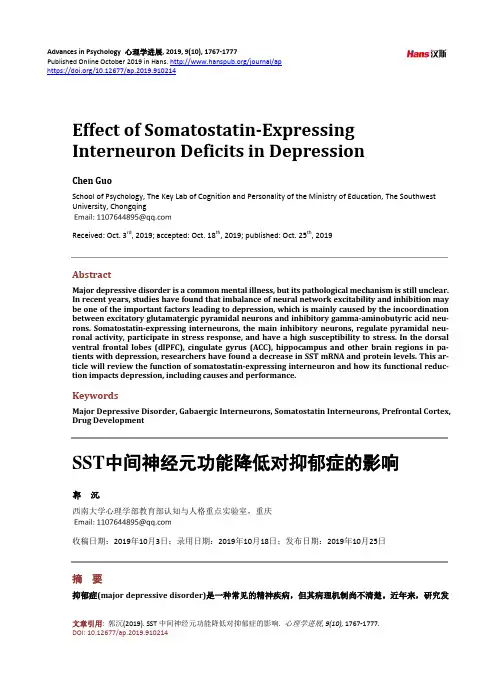
Advances in Psychology 心理学进展, 2019, 9(10), 1767-1777Published Online October 2019 in Hans. /journal/aphttps:///10.12677/ap.2019.910214Effect of Somatostatin-ExpressingInterneuron Deficits in DepressionChen GuoSchool of Psychology, The Key Lab of Cognition and Personality of the Ministry of Education, The Southwest University, ChongqingReceived: Oct. 3rd, 2019; accepted: Oct. 18th, 2019; published: Oct. 25th, 2019AbstractMajor depressive disorder is a common mental illness, but its pathological mechanism is still unclear.In recent years, studies have found that imbalance of neural network excitability and inhibition may be one of the important factors leading to depression, which is mainly caused by the incoordination between excitatory glutamatergic pyramidal neurons and inhibitory gamma-aminobutyric acid neu-rons. Somatostatin-expressing interneurons, the main inhibitory neurons, regulate pyramidal neu-ronal activity, participate in stress response, and have a high susceptibility to stress. In the dorsal ventral frontal lobes (dlPFC), cingulate gyrus (ACC), hippocampus and other brain regions in pa-tients with depression, researchers have found a decrease in SST mRNA and protein levels. This ar-ticle will review the function of somatostatin-expressing interneuron and how its functional reduc-tion impacts depression, including causes and performance.KeywordsMajor Depressive Disorder, Gabaergic Interneurons, Somatostatin Interneurons, Prefrontal Cortex, Drug DevelopmentSST中间神经元功能降低对抑郁症的影响郭沉西南大学心理学部教育部认知与人格重点实验室,重庆收稿日期:2019年10月3日;录用日期:2019年10月18日;发布日期:2019年10月25日摘要抑郁症(major depressive disorder)是一种常见的精神疾病,但其病理机制尚不清楚。
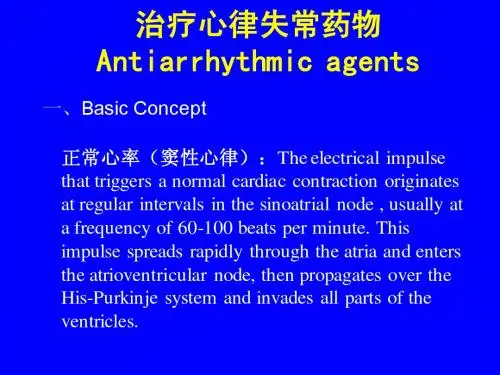
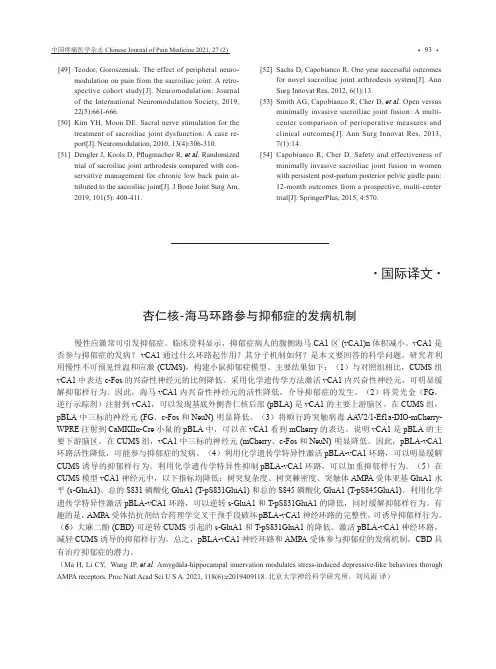
· 93 ·中国疼痛医学杂志Chinese Journal of Pain Medicine 2021, 27 (2)[49] Teodor, Goroszeniuk. The effect of peripheral neuro-modulation on pain from the sacroiliac joint: A retro-spective cohort study[J]. Neuromodulation: Journal of the International Neuromodulation Society, 2019, 22(5):661-666.[50] Kim YH, Moon DE. Sacral nerve stimulation for thetreatment of sacroiliac joint dysfunction: A case re-port[J]. Neuromodulation, 2010, 13(4):306-310. [51] Dengler J, Kools D, Pflugmacher R, et al. Randomizedtrial of sacroiliac joint arthrodesis compared with con-servative management for chronic low back pain at-tributed to the sacroiliac joint[J]. J Bone Joint Surg Am, 2019, 101(5): 400-411.[52] Sachs D, Capobianco R. One year successful outcomesfor novel sacroiliac joint arthrodesis system[J]. Ann Surg Innovat Res, 2012, 6(1):13.[53] Smith AG, Capobianco R, Cher D, et al. Open versusminimally invasive sacroiliac joint fusion: A multi-center comparison of perioperative measures and clinical outcomes[J]. Ann Surg Innovat Res, 2013, 7(1):14.[54] Capobianco R, Cher D. Safety and effectiveness ofminimally invasive sacroiliac joint fusion in women with persistent post-partum posterior pelvic girdle pain: 12-month outcomes from a prospective, multi-center trial[J]. SpringerPlus, 2015, 4:570.•国际译文•杏仁核-海马环路参与抑郁症的发病机制慢性应激常可引发抑郁症。
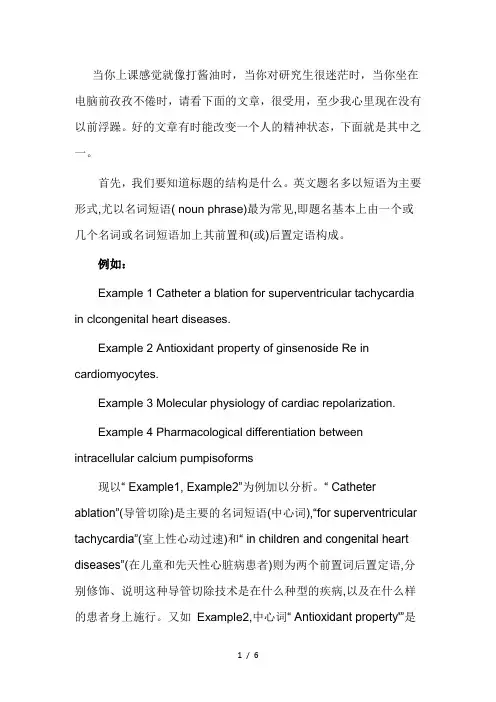
当你上课感觉就像打酱油时,当你对研究生很迷茫时,当你坐在电脑前孜孜不倦时,请看下面的文章,很受用,至少我心里现在没有以前浮躁。
好的文章有时能改变一个人的精神状态,下面就是其中之一。
首先,我们要知道标题的结构是什么。
英文题名多以短语为主要形式,尤以名词短语( noun phrase)最为常见,即题名基本上由一个或几个名词或名词短语加上其前置和(或)后置定语构成。
例如:Example 1 Catheter a blation for superventricular tachycardia in clcongenital heart diseases.Example 2 Antioxidant property of ginsenoside Re in cardiomyocytes.Example 3 Molecular physiology of cardiac repolarization.Example 4 Pharmacological differentiation between intracellular calcium pumpisoforms现以“ Example1, Example2”为例加以分析。
“ Catheter ablation”(导管切除)是主要的名词短语(中心词),“for superventricular tachycardia”(室上性心动过速)和“ in children and congenital heart diseases”(在儿童和先天性心脏病患者)则为两个前置词后置定语,分别修饰、说明这种导管切除技术是在什么种型的疾病,以及在什么样的患者身上施行。
又如Example2,中心词“ Antioxidant property'”是一个名词短语,“ of ginsenoside Re"和“ "in cardiomyocytes”也是两个前置词后置定语,用来修饰中心词“抗氧化特征”,说明是什么物质的“抗氧化特征”,以及对何种细胞的“抗氧化作用”。
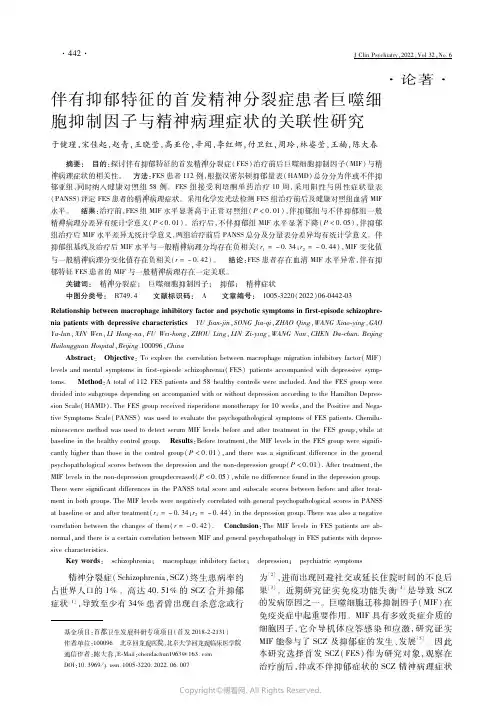
·论著·伴有抑郁特征的首发精神分裂症患者巨噬细胞抑制因子与精神病理症状的关联性研究于健瑾,宋佳起,赵青,王晓莹,高亚伦,辛闻,李红娜,付卫红,周玲,林姿莹,王楠,陈大春摘要: 目的:探讨伴有抑郁特征的首发精神分裂症(FES)治疗前后巨噬细胞抑制因子(MIF)与精神病理症状的相关性。
方法:FES患者112例,根据汉密尔顿抑郁量表(HAMD)总分分为伴或不伴抑郁亚组,同时纳入健康对照组58例。
FES组接受利培酮单药治疗10周,采用阳性与阴性症状量表(PANSS)评定FES患者的精神病理症状。
采用化学发光法检测FES组治疗前后及健康对照组血清MIF水平。
结果:治疗前,FES组MIF水平显著高于正常对照组(P<0.01),伴抑郁组与不伴抑郁组一般精神病理分差异有统计学意义(P<0.01)。
治疗后,不伴抑郁组MIF水平显著下降(P<0.05),伴抑郁组治疗后MIF水平差异无统计学意义,两组治疗前后PANSS总分及分量表分差异均有统计学意义。
伴抑郁组基线及治疗后MIF水平与一般精神病理分均存在负相关(r1=-0.34;r2=-0.44),MIF变化值与一般精神病理分变化值存在负相关(r=-0.42)。
结论:FES患者存在血清MIF水平异常,伴有抑郁特征FES患者的MIF与一般精神病理存在一定关联。
关键词: 精神分裂症; 巨噬细胞抑制因子; 抑郁; 精神症状中图分类号: R749.4 文献标识码: A 文章编号: 1005 3220(2022)06 0442 03Relationshipbetweenmacrophageinhibitoryfactorandpsychoticsymptomsinfirst episodeschizophreniapatientswithdepressivecharacteristics YUJian jin,SONGJia qi,ZHAOQing,WANGXiao ying,GAOYa lun,XINWen,LIHong na,FUWei hong,ZHOULing,LINZi ying,WANGNan,CHENDa chun.BeijingHuilongguanHospital,Beijing100096,ChinaAbstract: Objective:Toexplorethecorrelationbetweenmacrophagemigrationinhibitoryfactor(MIF)levelsandmentalsymptomsinfirst episodeschizophrenia(FES)patientsaccompaniedwithdepressivesymp toms. Method:Atotalof112FESpatientsand58healthycontrolswereincluded.AndtheFESgroupweredividedintosubgroupsdependingonaccompaniedwithorwithoutdepressionaccordingtotheHamiltonDepressionScale(HAMD).TheFESgroupreceivedrisperidonemonotherapyfor10weeks,andthePositiveandNega tiveSymptomsScale(PANSS)wasusedtoevaluatethepsychopathologicalsymptomsofFESpatients.Chemilu minescencemethodwasusedtodetectserumMIFlevelsbeforeandaftertreatmentintheFESgroup,whileatbaselineinthehealthycontrolgroup. Results:Beforetreatment,theMIFlevelsintheFESgroupweresignifi cantlyhigherthanthoseinthecontrolgroup(P<0.01),andtherewasasignificantdifferenceinthegeneralpsychopathologicalscoresbetweenthedepressionandthenon depressiongroup(P<0.01).Aftertreatment,theMIFlevelsinthenon depressiongroupdecreased(P<0.05),whilenodifferencefoundinthedepressiongroup.ThereweresignificantdifferencesinthePANSStotalscoreandsubscalescoresbetweenbeforeandaftertreat mentinbothgroups.TheMIFlevelswerenegativelycorrelatedwithgeneralpsychopathologicalscoresinPANSSatbaselineorandaftertreatment(r1=-0.34;r2=-0.44)inthedepressiongroup.Therewasalsoanegativecorrelationbetweenthechangesofthem(r=-0.42). Conclusion:TheMIFlevelsinFESpatientsareab normal,andthereisacertaincorrelationbetweenMIFandgeneralpsychopathologyinFESpatientswithdepres sivecharacteristics.Keywords: schizophrenia; macrophageinhibitoryfactor; depression; psychiatricsymptoms基金项目:首都卫生发展科研专项项目(首发2018 2 2131)作者单位:100096 北京回龙观医院,北京大学回龙观临床医学院通信作者:陈大春,E Mail:chendachun1963@163.comDOI:10.3969/j.issn.1005 3220.2022.06.007精神分裂症(Schizophrenia,SCZ)终生患病率约占世界人口的1%。
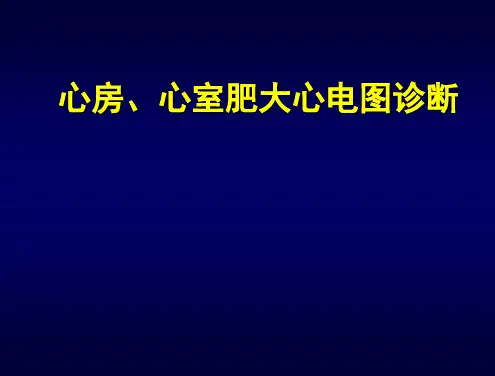

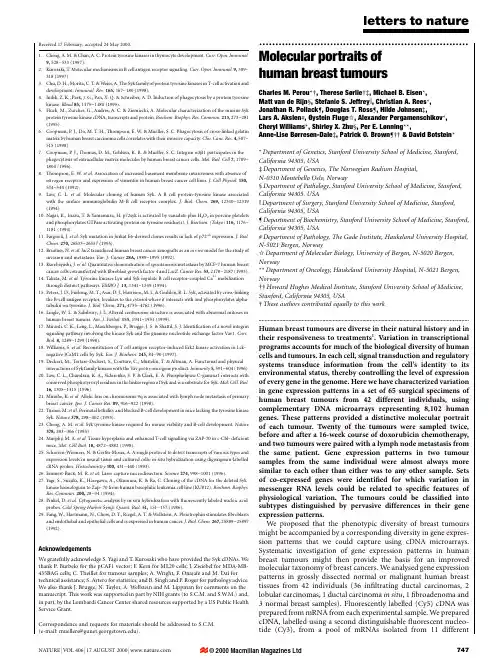
·综述·抑郁症抗炎治疗的研究进展杨会增,杨程皓摘要: 炎症因子参与抑郁症的发生发展,可有效预测抗抑郁药物治疗的应答情况;抗炎治疗的选择和疗效有赖于患者的炎症活性水平,伴有高炎症活性的抑郁症患者可从抗炎治疗中获益,而低炎症活性患者可能恶化症状。
鉴于相关研究的局限性,当前很难将研究结论推广应用于抑郁症的临床诊疗。
未来需开展更多高质量的研究进一步明确哪些患者可以从哪种抗炎治疗中获益。
关键词: 抑郁症; 免疫炎症假说; 巨噬细胞理论; 炎症因子; 抗炎治疗中图分类号: R749 4 文献标识码: A 文章编号: 1005 3220(2022)06 0492 05Researchprogressonanti inflammatorytreatmentofdepression YANGHui zeng,YANGCheng hao.TheInstituteofMentalHealth,TianjinMentalHealthCenter,TianjinAndingHospital,Tianjin300000,ChinaAbstract:Inflammatorycytokinesareinvolvedinthepathophysiologicalprocessofdepressionandcanef fectivelypredicttheresponsetoantidepressanttreatment;theapplicationandefficacyofanti inflammatorytreat mentareinflammatory activitydependent,whichmeansthatcombinedtreatmentwithanti inflammatorytreat mentcanhelptoimprovedepressivesymptomsfordepressedpatientswithhighinflammatoryactivity,whilethepatientswitharelativelowerinflammatoryactivitycouldbeworsenwithit.Inviewofthelimitationsofrelatedresearchtillnow,itiscurrentlydifficulttoapplytheresearchoutcomestotheclinicpracticeofdepressionman agement.Inthefuture,morehigh qualitystudiesareneededtofurtherexploreandconfirmwhocouldbenefitsfromwhichanti inflammatorytreatments.Keywords: depression; immune/inflammationhypothesis; macrophagetheory; inflammatorycytokines; anti inflammatorytreatment作者单位:300000 天津市安定医院通信作者:杨程皓,E Mail:yts83420@163.comDOI:10.3969/j.issn.1005 3220.2022.06.0201 前言世界范围内抑郁症是导致个体功能残疾的主要原因[1],具有发病率高、异质性强等特点。
㊀㊀[摘要]㊀炎症疾病的病理生理机制涉及到表观遗传学调控㊂组蛋白的翻译后修饰是表观遗传的重要组成部分,衍生自乳酸的组蛋白乳酸化是近年来发现的新型组蛋白翻译后修饰,包括巨噬细胞在内的免疫细胞在炎症疾病组织损伤修复中发挥重要作用㊂组蛋白乳酸化修饰作为表观遗传修饰介导免疫细胞修复基因㊁糖酵解基因表达调控及免疫细胞程序性死亡,从而参与调控炎症疾病的组织损伤修复㊂该文对组蛋白乳酸化参与调控炎症疾病的组织损伤修复的研究进展作一综述㊂㊀㊀[关键词]㊀炎症;㊀组织损伤修复;㊀组蛋白乳酸化;㊀免疫细胞㊀㊀[中图分类号]㊀R730㊀[文献标识码]㊀A㊀[文章编号]㊀1674-3806(2023)12-1308-05㊀㊀doi:10.3969/j.issn.1674-3806.2023.12.20Researchprogressontheinvolvementofhistonelactylationinregulatingtissuedamagerepairininflammatorydiseases㊀TANGYu⁃jiao,LIURu⁃xin,BAIXue,etal.DepartmentofEmergency,PeopleᶄsHospitalofNingxiaHuiAutonomousRegion(theThirdClinicalMedicalCollegeofNingxiaMedicalUniversity),Yinchuan750002,China㊀㊀[Abstract]㊀Thepathophysiologicalmechanismsofinflammatorydiseasesinvolveepigeneticregulation.Thepost⁃translationalmodificationofhistonesisanimportantcomponentofepigenetics,andthelactylatedhistonesderivedfromlacticacidisanovelpost⁃translationalmodificationofhistonesdiscoveredinrecentyears.Immunecells,includingmacrophages,playanimportantroleintherepairoftissuedamageininflammatorydiseases.Histonelactylationmod⁃ification,asanepigeneticmodification,mediatestheexpressionregulationofimmunecellrepairgenes,glycolyticgenes,andprogrammedcelldeath,therebyparticipatingintheregulationoftissuedamagerepairininflammatorydiseases.Inthispaper,theresearchprogressontheinvolvementofhistonelactylationinregulatingtissuedamagerepairininflam⁃matorydiseasesisreviewed.㊀㊀[Keywords]㊀Inflammation;㊀Tissuedamagerepair;㊀Histonelactylation;㊀Immunecells㊀㊀炎症是具有血管系统的活体组织对各种损伤因子刺激所发生的以防御反应为主的基本病理过程㊂炎症的发展是损伤㊁抗损伤和修复的动态过程㊂但炎症反应过度或者炎症持续存在,会对机体造成局部或全身的损害[1]㊂免疫细胞及其相关免疫分子的改变在炎症疾病病程进展中发挥重要作用㊂以往研究证实,血乳酸可以调控免疫细胞而发挥抗炎作用[2⁃5]㊂2019年Zhang等[6]研究证实,乳酸可能通过组蛋白乳酸化参与调控免疫细胞,进而介导炎症过程中的组织损伤修复㊂Chu等[7]研究发现,在脓毒症休克患者外周血单个核细胞中组蛋白H3第18位赖氨酸残基乳酸化(histoneH3lysine18lactylation,H3K18la)修饰水平与抗炎/修复基因精氨酸酶1(arginase1,Arg1)转录水平及抗炎细胞因子白细胞介素⁃10(interleukin⁃10,IL⁃10)表达水平呈正相关,这使组蛋白乳酸化的研究成果将来应用于临床抗炎治疗及组织损伤修复成为可能㊂本文对组蛋白乳酸化参与调控炎症疾病的组织损伤修复的研究进展综述如下㊂1㊀组蛋白乳酸化修饰的发现组蛋白是染色质重要组成部分之一,和DNA共同组成核小体结构㊂核心组蛋白H2A㊁H2B㊁H3㊁H4分别以二聚体(共八聚体)相结合,形成核小体核心,而DNA便缠绕在核小体核心上[8]㊂连接体组蛋白H1结合在核小体核心附近,稳定和定向连接体DNA进入和退出核小体核心[9⁃10]㊂组蛋白的翻译后修饰是表观遗传的热点研究方向之一,包括乙酰化㊁甲基化㊁磷酸化㊁泛素化等[11]㊂乳酸是细胞糖酵解途径重要的含碳代谢产物,它的生物学功能因肿瘤细胞中瓦博格效应的存在受到关注[12]㊂Zhang等[6]发现组蛋白赖氨酸残基乳酸化修饰的存在,并在人和小鼠细胞的核心组蛋白上鉴定出多个乳酸化位点㊂该发现拓宽了乳酸发挥非代谢功能的生物学意义,为探讨感染㊁肿瘤等病理过程提供了新视角㊂随后的研究发现不仅证实了组蛋白乳酸化的广泛存在,还发现了组蛋白乳酸化的诸多调控功能,比如介导巨噬细胞焦亡㊁干细胞命运调控㊁胚胎发育㊁神经元活动㊁炎症与纤维化㊁肿瘤的发生等[13⁃18]㊂2㊀组蛋白乳酸化与免疫细胞免疫细胞功能改变与炎症疾病的发生发展密切相关㊂近年研究发现,组蛋白乳酸化可参与调控巨噬细胞及其他免疫细胞基因表达,提示组蛋白乳酸化与炎症疾病之间存在着密切联系㊂2 1㊀组蛋白乳酸化与巨噬细胞㊀巨噬细胞作为先天性免疫细胞的重要成员,在炎症的各个阶段都可能发挥重要作用㊂当细菌中存在的病原体相关分子模式(pathogen⁃associatedmolecularpattern,PAMP)被巨噬细胞表面的病原体识别受体(如Toll样受体)识别时,M1型巨噬细胞被激活并产生大量的促炎介质,包括肿瘤坏死因子⁃α(tumornecrosisfactor⁃alpha,TNF⁃α)㊁IL⁃1和一氧化氮,杀死入侵的生物并激活适应性免疫[19]㊂但M1型巨噬细胞不受控制的激活可能触发全身炎症反应综合征(systemicinflammatoryresponsesyndrome,SIRS)甚至脓毒症[20]㊂为了抵消过度的炎症反应,巨噬细胞极化为抗炎表型(M2型)以分泌大量抗炎因子保护宿主免受过度损伤并促进伤口愈合[21],或者巨噬细胞发生过度凋亡参与免疫抑制形成[22]㊂另外,有研究发现脓毒症时,在PAMP或损伤相关分子模式刺激下巨噬细胞内形成典型的核苷酸结合寡聚化结构域样受体蛋白3(nucleotide⁃bindingoligomerizationdomain⁃likereceptorprotein3,NLRP3)/凋亡相关斑点样蛋白/半胱氨酸天冬氨酸蛋白酶⁃1焦亡小体,促使巨噬细胞发生焦亡并释放IL⁃1β㊁IL⁃18,加剧炎症反应[23]㊂巨噬细胞的状态改变与炎症病情发展关系密切,组蛋白乳酸化参与了巨噬细胞的状态改变㊂2 1 1㊀组蛋白乳酸化调控巨噬细胞极化表型㊀细菌攻击的M1巨噬细胞中内源性 乳酸时钟 开启基因表达以促进稳态,即在M1巨噬细胞极化的晚期,乳酸水平增高,组蛋白乳酸化水平增加,水平增高的H3K18la诱导参与损伤修复过程的M2⁃like基因表达,如Arg1[6]㊂外源乳酸增加导致的M1巨噬细胞内组蛋白乳酸化水平提高,不仅诱导了Arg1表达,还增强了血管内皮生长因子A(vascularendothelialgrowthfactorA,VEGFA)表达[6]㊂这些研究表明,乳酸和组蛋白乳酸化在M1巨噬细胞极化过程中驱动M2⁃like基因表达的积极作用㊂在非细菌感染相关的炎症模型中,也发现了组蛋白乳酸化调控巨噬细胞基因表型的证据㊂Cui等[17]发现在小鼠肺纤维化模型中,肺内肌成纤维细胞糖酵解增强产生并分泌大量乳酸,增加巨噬细胞中致纤维化基因的启动子处组蛋白乳酸化水平,并上调Arg1㊁血小板衍生生长因子(platelet⁃derivedgrowthfactor,PDGF)和Vegf⁃a等促纤维化基因的转录㊂Wang等[24]在一项研究中发现组蛋白乳酸化修饰可以抑制心肌梗死后过度的炎症反应,促进血管新生㊂心肌梗死后早期梗死区巨噬细胞H3K18la水平增高,进而促进修复基因富亮氨酸α2糖蛋白1(leucine⁃richalpha⁃2⁃glycoprotein1,Lrg1)㊁VEGFA和IL⁃10的转录,有利于心肌梗死后的心脏修复㊂Irizarry⁃Caro等[25]发现巨噬细胞以B细胞磷酸肌醇3⁃激酶衔接蛋白依赖性方式激活PI3K/Akt信号通路,Akt的活化不仅可以介导核因子kappaB(nuclearfactorkappaB,NF⁃κB)的下调以抑制促炎因子的转录㊁限制炎症,还可以增强糖酵解,导致乳酸积累㊁组蛋白乳酸化水平增加,进而促进M2⁃like基因Arg1和Krüppel样因子4(Krüppel⁃likefactor4,Klf4)表达,协调巨噬细胞从炎症状态向修复状态转变㊂该研究丰富了M1巨噬细胞中的组蛋白乳酸化促进M2⁃like基因表达的相关分子机制的研究㊂以上研究表明,组蛋白乳酸化对巨噬细胞的M2⁃like基因表达的促进作用对炎症免疫亢进阶段是有利的,可促进组织修复,防止炎症进一步扩散㊂而在部分炎症疾病(如脓毒症)中存在免疫抑制阶段时,组蛋白乳酸化的抗炎作用则会加重病情㊂在不同炎症阶段通过调节组蛋白乳酸化水平来改变巨噬细胞的极化状态,更有利于炎症疾病的预后㊂Dichtl等[26]提出了不同的观点,即赖氨酸乳酸化修饰和乳酸通常与巨噬细胞激活状态和组织修复相关基因表达无关,特别是Arg1㊂关于组蛋白乳酸化对巨噬细胞稳态基因的表达促进作用尚存争议,需要进一步研究证实㊂2 1 2㊀组蛋白乳酸化抑制巨噬细胞焦亡㊀焦亡是一种炎症性程序性细胞死亡,通过连接先天免疫和适应性免疫,在宿主防御中起着重要作用[27]㊂细胞焦亡依赖于gasdermin蛋白家族成员形成质膜孔,导致细胞释放大量促炎因子[28]㊂适度的细胞焦亡有助于病原体的清除[29],而急剧增加或过度的细胞焦亡导致促炎介质大量释放,加剧全身炎症和组织损伤[30]㊂Sun等[13]研究发现产乳酸益生菌酿酒酵母通过抑制巨噬细胞焦亡和调节肠道菌群来减轻溃疡性结肠炎㊂该研究发现乳酸促进巨噬细胞向M2表型极化发挥抗炎作用,还可通过抑制巨噬细胞内NLRP3炎性小体的形成而抑制巨噬细胞焦亡㊂研究认为这种抑制作用与乳酸增高导致的巨噬细胞中组蛋白乳酸化修饰增强有关,但对于组蛋白乳酸化修饰如何抑制巨噬细胞焦亡并未进行探讨㊂组蛋白乳酸化抑制巨噬细胞焦亡若得到进一步验证与解释,组蛋白乳酸化对巨噬细胞焦亡的抑制作用可将为炎症疾病组织损伤修复治疗提供新的思路㊂2 1 3㊀组蛋白乳酸化调控小胶质细胞糖酵解相关基因㊀小胶质细胞是中枢神经系统的驻留巨噬细胞,与许多神经退行性疾病和脑炎症性疾病的发病机制有关[31]㊂研究发现,小胶质细胞向糖酵解的转换导致小胶质细胞吞噬能力降低[32],而有氧糖酵解衍生的产物乳酸可直接增强小胶质细胞释放促炎细胞因子[33]㊂Pan等[34]发现在阿尔茨海默病(Alzheimerᶄsdisease,AD)小鼠模型中,H4K12la在小胶质细胞糖酵解相关基因(如低氧诱导因子⁃1a㊁丙酮酸激酶M型㊁乳酸脱氢酶A)的启动子区显著富集,并激活这些基因的转录,促进小胶质细胞的糖酵解活性,形成 糖酵解⁃组蛋白乳酸化⁃丙酮酸激酶M2 正反馈调控环路,加强小胶质细胞的促炎特性,最终促进AD进展㊂在颅内感染或其他炎症疾病模型中,可能也存在小胶质细胞代谢重编程向有氧糖酵解转换,继而引起小胶质细胞内组蛋白乳酸化水平增高,促进其糖酵解基因转录,加强其促炎效应,加剧神经系统功能障碍㊂反之,阻断小胶质细胞的组蛋白乳酸化可能减轻神经系统炎症反应㊂2 2㊀组蛋白乳酸化与外周血单个核细胞㊀外周血单个核细胞是外周血中具有单个核的细胞,包括淋巴细胞和单核细胞㊂Chu等[7]发现H3K18la不仅在所有受试者中表达,而且在脓毒症休克患者中表达最高㊂研究者还发现H3K18la蛋白表达与血清乳酸㊁炎症分子水平㊁抗炎基因Arg1转录水平呈正相关㊂但关于组蛋白乳酸化与炎症分子及Arg1转录水平是否存在直接的调控关系,研究者并未进一步探索㊂总之,这些研究结果证明,乳酸化组蛋白H3K18la可作为诊断和预测脓毒性休克严重程度的潜在生物标志物,为将来组蛋白乳酸化在脓毒症临床诊疗应用方面的进一步研究提供了线索㊂Wang等[24]研究发现心肌梗死后外周血单核细胞组蛋白乳酸化水平升高上调修复基因(VEGFA㊁IL⁃10和Lrg1)表达,并通过动物实验证明了H3K18la水平增高的单核细胞输注有助于心肌梗死后的心脏损伤修复㊂在其他炎症损伤中,H3K18la水平增高的单核细胞或巨噬细胞输注是否有利于组织损伤修复,值得进一步研究㊂2 3㊀组蛋白乳酸化与其他免疫细胞㊀研究表明,乳酸对树突状细胞㊁T细胞㊁自然杀伤细胞等免疫细胞的功能具有抑制作用[2,35],但组蛋白乳酸化是否参与这种抑制作用尚未证实㊂目前,大部分组蛋白乳酸化与免疫细胞的相关研究来源于肿瘤领域,研究人员在肿瘤内浸润的免疫细胞中也检测到了乳酸化修饰㊂肿瘤浸润髓系细胞是参与肿瘤免疫逃逸的重要细胞群,主要包括肿瘤相关巨噬细胞㊁髓源抑制性细胞㊁肿瘤相关中性粒细胞等㊂Xiong等[36]研究发现组蛋白H3K18la乳酸化修饰形式促进肿瘤浸润髓系细胞中甲基转移酶样蛋白3(methyltransferase⁃like3,METTL3)的表达,增强JAK1⁃STAT3信号通路的激活,启动下游免疫抑制分子的表达,从而产生免疫抑制,这为组蛋白乳酸化在炎症环境中免疫抑制作用的分子机制研究提供了新的思路㊂3㊀组蛋白乳酸化修饰的关键酶Zhang等[6]通过体外实验及细胞实验表明组蛋白乙酰基转移酶p300是潜在的乳酰转移酶,乳酸转化成乳酰辅酶A后通过乙酰基转移酶p300将乳酸基团从乳酰辅酶A转移至组蛋白上㊂而Gaffney等[37]发现乳酸部分从乳酰谷胱甘肽转移到组蛋白赖氨酸残基上发生赖氨酸D⁃乳酸化,且这一过程不依赖任何酶㊂人体和大多数哺乳动物糖酵解代谢主要产生的物质是L⁃乳酸,L⁃乳酸在缺氧和Warburg效应期间被大量诱导;D⁃乳酸是L⁃乳酸的光学异构体,正常情况下在细胞中的含量远远低于L⁃乳酸[38⁃39]㊂而Moreno⁃Yruela等[40]的研究证明,细胞内组蛋白乳酸化衍生自L⁃乳酸,且细胞内组蛋白乳酸化是赖氨酸L⁃乳酸化而非赖氨酸D⁃乳酸化㊂因此,细胞内组蛋白乳酸化修饰是一种酶促反应㊂体外实验验证了组蛋白去乙酰化酶⁃3和沉默调节蛋白1⁃3也具有去乳酸化修饰作用,并通过过表达和敲低实验表明两者在细胞中发挥去乳酸化作用㊂Cui等[17]通过敲低及敲除实验证明,乙酰转移酶p300介导了小鼠肺巨噬细胞促纤维化基因启动子处的组蛋白乳酸化㊂Wang等[24]通过敲低实验证实,组蛋白乙酰化酶氨合成通用控制蛋白5参与骨髓源性巨噬细胞组蛋白乳酸化和其靶向的修复基因转录㊂总之,这些数据表明组蛋白乳酸化是由调节酶安装和去除的,这些调节酶能否作为组蛋白乳酸化在炎症疾病中发挥作用的调控者,值得进一步研究㊂4 结语组蛋白乳酸化作为一种新型翻译后修饰,对组蛋白乳酸化的研究可加深人们对乳酸功能及其在各种病理生理条件(包括感染和癌症)中的作用的了解㊂目前,有关组蛋白乳酸化的研究尚处于初级阶段,组蛋白乳酸化参与炎症疾病相关免疫细胞调控相关的研究还有较大空间㊂肿瘤领域组蛋白乳酸化在免疫细胞中的研究也启发学者们继续探讨在炎症环境中组蛋白乳酸化的相关分子机制㊂未来还需要更多的基础实验及临床研究提供更加充分的数据资料,为炎症疾病组织损伤修复的免疫治疗带来新的希望㊂组蛋白乳酸化在除免疫细胞外的其他组织细胞中的炎症调控作用能被研究证实,将为临床提供更多基于组蛋白乳酸化的抗炎治疗途径㊂参考文献[1]林凯玲,薛㊀艳.NLRP3炎性小体与慢性炎症相关疾病的研究进展[J].中国临床新医学,2020,13(7):733-737.[2]HaasR,SmithJ,Rocher⁃RosV,etal.Lactateregulatesmetabolicandpro⁃inflammatorycircuitsincontrolofTcellmigrationandeffectorfunctions[J].PLoSBiol,2015,13(7):e1002202.[3]刘㊀奇,赵洪强,姚人骐,等.高乳酸血症对脓毒症小鼠树突状细胞功能的影响及作用机制[J].解放军医学院学报,2021,42(4):430-437.[4]刘㊀苗,李姣姣,陈江南,等.乳酸调节巨噬细胞向M2型极化的作用[J].医学分子生物学杂志,2018,15(3):136-139.[5]HusainZ,HuangY,SethP,etal.Tumor⁃derivedlactatemodifiesantitumorimmuneresponse:effectonmyeloid⁃derivedsuppressorcellsandNKcells[J].JImmunol,2013,191(3):1486-1495.[6]ZhangD,TangZ,HuangH,etal.Metabolicregulationofgeneexpres⁃sionbyhistonelactylation[J].Nature,2019,574(7779):575-580.[7]ChuX,DiC,ChangP,etal.LactylatedhistoneH3K18asapoten⁃tialbiomarkerforthediagnosisandpredictingtheseverityofsepticshock[J].FrontImmunol,2022,12:786666.[8]TessarzP,KouzaridesT.Histonecoremodificationsregulatingnucleo⁃somestructureanddynamics[J].NatRevMolCellBiol,2014,15(11):703-708.[9]ThomaF,KollerT,KlugA.InvolvementofhistoneH1intheorgani⁃zationofthenucleosomeandofthesalt⁃dependentsuperstructuresofchromatin[J].JCellBiol,1979,83(2Pt1):403-427.[10]AllanJ,HartmanPG,Crane⁃RobinsonC,etal.Thestructureofhis⁃toneH1anditslocationinchromatin[J].Nature,1980,288(5792):675-679.[11]LawrenceM,DaujatS,SchneiderR.Lateralthinking:howhistonemodificationsregulategeneexpression[J].TrendsGenet,2016,32(1):42-56.[12]WarburgO.Onrespiratoryimpairmentincancercells[J].Science,1956,124(3215):269-270.[13]SunS,XuX,LiangL,etal.Lacticacid⁃producingprobioticsac⁃charomycescerevisiaeattenuatesulcerativecolitisviasuppressingmac⁃rophagepyroptosisandmodulatinggutmicrobiota[J].FrontImmunol,2021,12:777665.[14]LiL,ChenK,WangT,etal.Glis1facilitatesinductionofpluri⁃potencyviaanepigenome⁃metabolome⁃epigenomesignallingcascade[J].NatMetab,2020,2(9):882-892.[15]YangW,WangP,CaoP,etal.Hypoxicinvitroculturereduceshis⁃tonelactylationandimpairspre⁃implantationembryonicdevelopmentinmice[J].EpigeneticsChromatin,2021,14(1):57.[16]HagiharaH,ShojiH,OtabiH,etal.Proteinlactylationinducedbyneuralexcitation[J].CellRep,2021,37(2):109820.[17]CuiH,XieN,BanerjeeS,etal.Lungmyofibroblastspromotemac⁃rophageprofibroticactivitythroughlactate⁃inducedhistonelactylation[J].AmJRespirCellMolBiol,2021,64(1):115-125.[18]YuJ,ChaiP,XieM,etal.Histonelactylationdrivesoncogenesisbyfacilitatingm6AreaderproteinYTHDF2expressioninocularmela⁃noma[J].GenomeBiol,2021,22(1):85.[19]SicaA,MantovaniA.Macrophageplasticityandpolarization:invivoveritas[J].JClinInvest,2012,122(3):787-795.[20]MaJ,WeiK,LiuJ,etal.Glycogenmetabolismregulatesmacrophage⁃mediatedacuteinflammatoryresponses[J].NatCommun,2020,11(1):1769.[21]MurrayPJ,WynnTA.Protectiveandpathogenicfunctionsofmac⁃rophagesubsets[J].NatRevImmunol,2011,11(11):723-737.[22]LuanYY,YaoYM,XiaoXZ,etal.Insightsintotheapoptoticdeathofimmunecellsinsepsis[J].JInterferonCytokineRes,2015,35(1):17-22.[23]WangT,ZhongH,ZhangW,etal.STAT5ainducesendotoxintoler⁃ancebyalleviatingpyroptosisinKupffercells[J].MolImmunol,2020,122:28-37.[24]WangN,WangW,WangX,etal.Histonelactylationboostsrepa⁃rativegeneactivationpost⁃myocardialinfarction[J].CircRes,2022,131(11):893-908.[25]Irizarry⁃CaroRA,McDanielMM,OvercastGR,etal.TLRsigna⁃lingadapterBCAPregulatesinflammatorytoreparatorymacrophagetransitionbypromotinghistonelactylation[J].ProcNatlAcadSciUSA,2020,117(48):30628-30638.[26]DichtlS,LindenthalL,ZeitlerL,etal.LactateandIL⁃6definesepa⁃rablepathsofinflammatorymetabolicadaptation[J].SciAdv,2021,7(26):eabg3505.[27]ZhouCB,FangJY.Theroleofpyroptosisingastrointestinalcancerandimmuneresponsestointestinalmicrobialinfection[J].BiochimBiophysActaRevCancer,2019,1872(1):1-10.[28]ShiJ,ZhaoY,WangK,etal.CleavageofGSDMDbyinflammatorycaspasesdeterminespyroptoticcelldeath[J].Nature,2015,526(7575):660-665.[29]MiaoEA,LeafIA,TreutingPM,etal.Caspase⁃1⁃inducedpyroptosisisaninnateimmuneeffectormechanismagainstintracellularbacteria[J].NatImmunol,2010,11(12):1136-1142.[30]ZhuoL,ChenX,SunY,etal.RapamycininhibitedpyroptosisandreducedthereleaseofIL⁃1βandIL⁃18inthesepticresponse[J].BiomedResInt,2020,2020:5960375.[31]YuanYY,XieKX,WangSL,etalInflammatorycaspase⁃relatedpyrop⁃tosis:mechanism,regulationandtherapeuticpotentialforinflammatoryboweldisease[J].GastroenterolRep(Oxf),2018,6(3):167-176.[32]McIntoshA,MelaV,HartyC,etal.Ironaccumulationinmicrogliatriggersacascadeofeventsthatleadstoalteredmetabolismandcom⁃promisedfunctioninAPP/PS1mice[J].BrainPathol,2019,29(5):606-621.[33]AnderssonAK,RönnbäckL,HanssonE.Lactateinducestumournec⁃rosisfactor⁃α,interleukin⁃6andinterleukin⁃1βreleaseinmicroglial⁃andastroglial⁃enrichedprimarycultures[J].JNeurochem,2005,93(5):1327-1333.[34]PanRY,HeL,ZhangJ,etal.Positivefeedbackregulationofmicro⁃glialglucosemetabolismbyhistoneH4lysine12lactylationinAlzheimerᶄsdisease[J].CellMetab,2022,34(4):634-648.[35]FischerK,HoffmannP,VoelklS,etal.Inhibitoryeffectoftumorcell⁃derivedlacticacidonhumanTcells[J].Blood,2007,109(9):3812-3819.[36]XiongJ,HeJ,ZhuJ,etal.Lactylation⁃drivenMETTL3⁃mediatedRNAm6Amodificationpromotesimmunosuppressionoftumor⁃infiltratingmyeloidcells[J].MolCell,2022,82(9):1660-1677.[37]GaffneyDO,JenningsEQ,AndersonCC,etal.Non⁃enzymaticlysinelactoylationofglycolyticenzymes[J].CellChemBiol,2020,27(2):206-213.[38]WalentaS,WetterlingM,LehrkeM,etal.Highlactatelevelspre⁃dictlikelihoodofmetastases,tumorrecurrence,andrestrictedpatientsurvivalinhumancervicalcancers[J].CancerRes,2000,60(4):916-921.[39]EwaschukJB,NaylorJM,ZelloGA.D⁃lactateinhumanandrumi⁃nantmetabolism[J].JNutr,2005,135(7):1619-1625.[40]Moreno⁃YruelaC,ZhangD,WeiW,etal.ClassIhistonedeacety⁃lases(HDAC1⁃3)arehistonelysinedelactylases[J].SciAdv,2022,8(3):eabi6696.[收稿日期㊀2023-02-21][本文编辑㊀韦㊀颖]本文引用格式唐玉娇,刘如新,白㊀雪,等.组蛋白乳酸化参与调控炎症疾病的组织损伤修复的研究进展[J].中国临床新医学,2023,16(12):1308-1312.㊀㊀[摘要]㊀孤独症儿童因其独特的生理㊁行为特点较健康儿童在口腔护理方面存在更多困难㊂近年来,国内外进行了较多关于孤独症儿童口腔防治的研究㊂该文对孤独症儿童的口腔疾病防治的研究进展作一综述㊂㊀㊀[关键词]㊀孤独症儿童;㊀口腔疾病;㊀防治㊀㊀[中图分类号]㊀R788㊀[文献标识码]㊀A㊀[文章编号]㊀1674-3806(2023)12-1312-05㊀㊀doi:10.3969/j.issn.1674-3806.2023.12.21Researchprogressinthepreventionandtreatmentofmouthdiseasesinautismchildren㊀HEYang⁃yan,YANGYao⁃ju,SHIChun⁃mei.DepartmentofStomatology,GuangxiInternationalZhuangMedicineHospital,Nanning530001,China㊀㊀[Abstract]㊀Autismchildrenhavemoredifficultiesinoralcarethanhealthychildrenbecauseoftheiruniquephysiologicalandbehavioralcharacteristics.Inrecentyears,manystudiesonthepreventionandtreatmentofmouthdiseasesinautismchildrenhavebeenconductedathomeandabroad.Thispaperreviewsthepreventionandtreatmentofmouthdiseasesinautismchildren.㊀㊀[Keywords]㊀Autismchildren;㊀Mouthdiseases;㊀Preventionandtreatment。
专业八级-409(总分100,考试时间90分钟)READING COMPREHENSIONPassage 1How do we recognize fear in another person? Scientists have long known that the amygdala, an almond-shaped part of the brain, is critical for the perception of fear. But exactly what role it plays in recognizing facial expressions has remained a mystery.A new study shows that the amygdala actively seeks out potentially important information in the face of another person. In particular, it focuses our attention on a person"s eyes, the facial features most likely to register fear. "These findings provide a much more abstract and general account of what the amygdala does," Ralph Adolphs said. Adolphs is a professor of psychology and neuroscience at Caltech University in Pasadena, California, and the University of Iowa in Iowa City.Adolphs"s study focuses on a 38-year-old woman with an amygdala that is damaged from a rare genetic disease. As a result, she is unable to recognize fear in people"s facial expressions. However, the scientists have found that she is able to recognize fear if instructed to concentrate her attention on a person"s eyes. Adolphs says the research could help those who suffer from other disorders such as autism, which can dull some people"s ability to discern important facial signals. The study is published in this week"s issue of the science journal Nature.Adolphs and his colleagues have studied the woman, known as SM, for more than a decade. She has a brain lesion in the amygdala. Not only can she not recognize fear, but she also fails to judge how trustworthy people look.To find out how a person perceives fear in other people, the scientists had study participants look at photographs of fearful and happy faces through holes that revealed only small parts of the images. People with normal brains always looked immediately at the eye region of a face—even more so when the face was fearful. SM, on the other hand, failed to spontaneously look at the eyes, instead staring straight ahead at the photographs. As a result, she judged that each face had a neutral expression. "She simply doesn"t know where to look in faces in order to seek out potentially useful information," Adolphs said. "That knowledge is something that other people do automatically."Although SM"s damaged amygdala is unable to direct the visual system to seek information, its capacity to process visual information is intact. Remarkably, the scientists found that SM was able to recognize fear in a person if told explicitly to look at the eyes of the other person. This solution,though, was short-lived, as SM needed to be reminded continuously to look at the eyes."This reveals that the deficit caused by amygdala lesion is not causing a loss of the knowledge of what fear is or looks like, which is what people would have thought until now," Patrik Vuilleumier said. Vuilleumier, a neuroscientist at the University Medical Center of Geneva, Switzerland, wrote a commentary in Nature on the study.The results reinforce the idea that the amygdala can modulate perception and attention and is not responsible only for "knowing" or "analyzing" signals of fear, Vuilleumier said. In other words, in addition to analyzing other people"s eye signals, the amygdala "tells" you to check others" eyes in the first place. "The amygdala is able to guide the visual system to respond to faces, not only the converse that the visual system is feeding the amygdaia," he said. The scientists have also discovered that the amygdala is activated by other stimuli that don"t have anything to do with fear, such as erotic images."The simple answer that the amygdala processes fear or the threat of danger is only a very small part of the story," Adolphs said. "What we"re looking for is a **prehensive account of what the amygdala does that may begin to tie all these pieces together." Adolphs says many parts of the brain work together and that more research will probably relate cognitive abilities to a network of brain structures. Meanwhile, the study could lead to therapies to help patients with defective emotional perception to lead more normal lives. People with autism, for example, may have similar brain impairments to those of the woman in the study. Some autistics may be unable to make normal eye movements when looking at other people. They may therefore fail to make judgments about other people"s emotions."To the extent that we could actually instruct people with autism how to look at the world and other people"s faces, we might be in a position to improve their impaired social functions," Adolphs said.1. "A brain lesion" in Paragraph Four probably meansA. a psychological damage of the brain.B. a physical damage of the brain.C. a cognitive disorder of the brain.D. a respondent loss of the brain.2. According to the passage, people with their amygdala damaged canA. recognize fear with instruction.B. recognize fear spontaneously.C. distinguish facial expressions.D. seek important facial signals.3. Which of the following is NOT included in the findings of the new study?A. The amygdala can guide the visual system to look for information.B. The amygdala can affect one"s perceptive and attentive ability.C. The damaged amygdala can deprive one"s knowledge of fear.D. The damaged amygdala can still process visual information.4. People with damaged amygdala resemble autistics in the following points EXCEPT thatA. they both suffer from brain damage.B. they both have difficulty in socialization.C. they both have defective perceptive abilities.D. they both have the desire **munication.5. The main point of the last two paragraphs isA. the cognitive function of brain structure.B. the therapeutic value of study of amygdala.C. the future focus of research on amygdala.D. the significance of research on amygdala.Passage 2Of all the misfortunes a child can suffer, few provoke as much dread as autism. The condition—a neurological disorder that impedes language and derails social and emotional development—has become ever **mon in recent decades, thanks partly to better diagnosis. Experts now suspect that one person in 160 lives with some degree of autism; that"s three to four times the rate in the 1970s. But while the outward manifestations are well known, science is just beginning to illuminate the underlying biology. What goes wrong in the autistic brain? What defect or injury leaves it largely incapable of empathy? A growing body of evidence, capped by new findings from the University of California, San Diego, raises a tantalizing possibility. The new study, published in The Journal of the American Medical Association, links the condition to abnormally rapid brain growth during infancy—and it raises new hopes for diagnosis and treatment.The key to last weeks finding was not a million-dollar imaging device but a tape measure. Past studies have shown that autistic toddlers have abnormally large brains for their age. But because autism is rarely detected in kids younger than 2 or 3 years old, researchers have never known quite how that situation arises. Two years ago the San Diego team realized that children"s old medical records might hold important clues. Led by neuroscientist Eric Courchesne, the researchers tracked down early-childhood head measurements for 48 autistic preschoolers, **pared them with national norms. As it turned out, the kids" heads had been smaller than average at birth but had grown explosively during infancy, shooting from the 25th percentile to the 84th in roughly a year"s time. And faster growth predicted greater impairment. Mildly autistic subjects reached only the 59th percentile, but the severely afflicted kids reached the 95th percentile.The implications are hard to miss. Autism, the new findings suggest, is not a sudden calamity that strikes children at the age of 2 or 3 but a developmental problem that can be traced back to in- fancy. That alone should help allay the suspicion that autism is caused by vaccines or pollutants that kids encounter later in childhood. But the new findings say less about the causes of autism than about its dynamics. The current study focuses on the first year of life, but the trouble isn"t confined to that period. Other recent studies suggest that the early growth spurt is followed by several years of slower expansion, giving the autistic child an adult-size brain by the age of 4 or 5. During adolescence and adulthood, autistic brains are generally no larger than normal ones. Unfortunately, they exhibit a range of other anomalies, including dense clusters of underdeveloped cells in the hippocampus and amygdala-structures that are critical for integrating emotional and sensory information.Does rapid growth actually cause all this damage? It"s still an open question. "The abnormal growth patterns give you a clue that something is amiss," says Dr. Margaret Bauman, a neurologist at Harvard Medical School and the LADDERS Autism Research Foundation, "but we can only guess at the underlying process." Courchesne believes it can be summed up in three words:"growth without guidance". Normal brain development is not a monologue but a dialogue, in which the brain generates neural circuits and the child"s experiences determine which ones survive. The first year of life is a critical period for this "experience-guided growth" and it"s not hard to see how a sudden shift into high gear might derail it. The brains circuitry would expand haphazardly as cell growth outpaced experience, creating a chronic sensory overload. Courchesne hopes researchers will now confirm the dangers of unregulated brain growth by inducing it experimentally in animals. "Once we know what causes this growth defect," he says, "it may be possible to use biological treatments to counter it."The more immediate goal is simply to recognize autism at earlier stages, and to give affected kids the support they need to grow and learn and cope. Will the new findings advance that cause? Dr. Janet Lainhart, an autism expert at the University of Utah, is skeptical. The findings are most useful to researchers attempting to define the underlying developmental neuropathology of autism, she writes in a commentary on the San Diego study, rather than to physicians trying to identify young children with autism. That"s because, rapid head growth can signal other childhood maladies, including tumors and hydrocephalus, and often means "nothing at all". Lainhart calculates that if doctors used head circumference as a screening test for autism, they would pick up 60 healthy children for every autistic one. Courchesne concedes the point, but he still believes it"s prudent for pediatricians to monitor head growth. The world"s oldest measurement tool still has the power to amaze, he says. It may not provide a definitive diagnosis, but it is inexpensive, non-invasive and objective and most of the concerns it raises can quickly be resolved. Where autism is concerned, that"s still as good a goal as any.1. The new findings in the study tell usA. the underlying biology of autism.B. the developmental problem during infancy.C. new methods for curing autism.D. the connection between brain growth and autism.2. The previous study of autism has shown the following EXCEPT thatA. autistic children have extraordinarily large brains.B. children"s medical records might contain useful information.C. biological treatment could be applied to cure autism.D. we can guess some information from abnormal growth pattern.3. The word "haphazardly" in the fourth paragraph probably meansA. accidentally.B. frequently.C. orderly.D. quickly.4. Which of the following implies a comparison?A. The findings are most useful to researchers attempting to define the underlying developmental neuropathology of autism.B. The new study links the condition to abnormally rapid brain growth during infancy...C. Experts now suspect that one person in 160 lives with some degree of autism; that"s three to four times the rate in the 1970s.D. The key to last weeks finding was not a million-dollar imaging device but a tape measure.5. The attitude of Dr. Lainhart towards the new findings isA. positive.B. indifferent.C. neutral.D. negative.Passage 3Three decades after the first Apollo landing on the moon, the debate between proponents of manned and unmanned space missions has not changed a great deal. But many space scientists, who work with robotic satellites including me, have gradually moved from opposing human spaceflight to a more moderate position. In special situations, we now realized, sending people into space is not just an expensive stunt but can be more cost-effective than sending robots. Mars exploration isThe basic advantage of astronauts is that they can explore Mars in real time, free of communications delays and capable of following up interesting results with new experiments. But the question arises: Where should the astronauts be? The obvious answer—on the surface of Mars—is not necessarily the most efficient. At the first "Case for Mars" conference in 1981, one of the more provocative conclusions was that the Martian moons, Phobos and Deimos, could serve as comparatively inexpensive beachheads.Most current mission scenarios involve a pair of spacecraft. The first positions propellants and other **ponents, such as spare modules and re-entry vehicle, on or near Mars. Because the journey time is not crucial, it can use electric propulsion and gravity-assist procedures to reduce the cost. The story is rather different for the second spacecraft, which transports the astronauts. It must traverse Earth"s radiation belts rapidly, and to save on supplies, the transit time to Mars should be as short as possible.The carious mission plans part ways when it comes to deciding what should happen once the crew ship and the freight ship link up at the Red Planet. In order of increasing difficulty and expense, six possible scenarios are: a Mars flyby analogous to the early Apollo missions, with immediate return to Earth; a Mars or-biter, permitting a longer stay near the planet; a Phobos-Deimos (Ph-D) mission, involving a transfer to a circular, equatorial orbit, with a landing and base on a Martian moon, preferably Deimos; a hybrid mission (Ph-D-plus) that adds a brief sortie to the Martian surface; a full-scale Martian landing, with a longer stay on the surface and a complete program of research; and finally, an extended stay on Mars, during which astronauts erect permanent structures **mence continuous habitations of the planet.The trick will be to make sure the first manned mission is ambitious—the adventure is, after all, part of the attraction—but not too ambitious, lest it not win funding. The Ph-D and Ph-D-plus missions offer a compelling balance of cost and benefit and would provide the greatest return for science.Deimos would offer an excellent base for the study of Mars. From there the astronauts could deploy and control atmospheric probes, subsurface penetrators and rover vehicles all over the Martian surface. The moon"s near-synchronous orbit permits direct contact with a rover for about 40 hours at a time. Phobos, being closer to the planet, orbits faster and therefore lacks this particular advantage. But astronauts on either moon could analyze returned samples without fear of containing Earth with any Martian life-forms.The ready availability of a vacuum would make it easier to operate laboratory instruments such as mass spectrometers and electron microscopes. By relocating the spacecraft to different locations on Deimos—an easy task in the minuscule gravity—astronauts could protect themselves fromsolar storms and meteor streams. Besides, the moons are fascinating bodies in their own right; direct sampling would investigate their mysterious origins.In comparison, an operating base on the surface of Mars would suffer many handicaps. Rovers deployed elsewhere on the planet would still have to be operated by remote control, which would require a **munications system to relay **mands. Returning samples from distant locations to the base would be more difficult. Heavy backup batteries or nuclear generators would be needed to power the base at night or during dust storms.In the more distant future, the moons could serve as way stations for descent to or ascent from the surface via tethers. Scientists on Deimos could safely direct large-scale climatological experiments, such as altering weather patterns or melting the polar caps—thereby testing techniques for terraforming Mars or mitigating climate change on Earth.Although the costs and benefits of various mission scenarios are difficult to analyze at this early stage, I conducted a poll of Mars mission experts during a conference several years ago. It offers the full spectrum of science more cheaply and quickly, and it would set the stage for an eventual base and colony on the surface.1. Which of the following is NOT the characteristic of manned mission?A. A proper landing site has already been chosen.B. Astronauts have the ability of exploring Mars in real time.C. There is no communications delays on the road.D. Astronauts design new experiments with interesting results.2. Which of the following is INCORRECT as for the advantage of Ph-D and Ph-D-plus mission?A. Astronauts can analyze samples safely on Deimos and Phobos.B. Vacuum can protect astronauts from solar and meteor storms.C. Astronauts have no difficulties when landing on Mars surface.D. Astronauts may suffer many handicaps on the surface of Mars.3. Which of the following allows a longer stay near the planet?A. A Mars flyby.B. A Mars orbiter.C. A Phobos-Deimos mission.D. A hybrid mission.4. The following statements are about the author of this article EXCEPT thatA. he did a survey of Mars mission by himself.B. he had taken part in a conference on travel to Mars.C. he believed that manned mission to Mars deserved an effort.D. he has nothing to do with robotic satellites.5. What is the most appropriate title of this article?A. Mars and its MoonsB. To Mars by way of its MoonsC. Ambitious adventure: worth?D. What it"s like on MarsPassage 4Sometimes, medical science makes breakthroughs that almost no one **ing. Other times, it just seems to catch up with what ordinary people have known intuitively for generations. Though the latest finding from the University of New South Wales falls into the second category, that doesn"t diminish its significance. Having pored over thousands of pages of data, researchers are now all but convinced that by exercising their brains people can substantially reduce their risk of dementia (痴呆).Scientists have conducted several hundred studies of the theory that brain reserve—the effect of formal education and mentally challenging work and leisure pursuits—may, through some mechanism not fully understood, protect people against dementia. Aware that the studies had tossed up contradictory results, University of N.S.W. neuroscientist Michael Valenzuela and colleague Per-minder Sachdev last year conducted the first systematic review of research on brain reserve. Having integrated data from 22 studies of possible links between people"s behavior and their subsequent brain health, the pair bring down their verdict in a paper about to be published in British journal Psychological Medicine. In short, they say, people with high brain reserve have almost half as much risk of developing dementia as those with low brain reserve. In one sense the brain appears to be no different from the muscles of the body, says Valenzuela: "It"s a case of use it or lose it."Prevention is crucial with dementia, as medicines do no more than alleviate the symptoms for the 200,000 sufferers in Australia and New Zealand. The **mon type of dementia, Alzheimer"s Disease, is characterized by the spread of sticky plaques (斑块) and clumps of tangled fiber that **munication between brain cells. Gradually robbing people of their memory, personality and eventually all cognitive function, it typically kills within 5 to 10 years. While most experts presume that aerobic exercise protects people from dementia by maintaining good blood flow to the brain, how mental exercise could help is still a puzzle. "There are a lot of theories," says Valenzuela, "but it"s very difficult to pinpoint a single neurobiological characteristic that distinguishes people with high brain reserve from those with low brain reserve. I think that"s been part of the problem: we"ve been looking for a magic bullet." Instead, Valenzuela assumes that mental activity alters the central nervous system in different ways at various levels. Research on mice, he says, shows that a highly stimulating environment increases both the production of new brain and nerve cells and the density of blood vessels around them. A few years ago, Valenzuela headed a project in which a group of elderly Sydney residents had their brains analyzed before and after five weeks of memory training. Investigators found that the exercises induced biochemical changes that were the opposite of what occurs when Alzheimer"s takes hold.That finding still excites V alenzuela because it suggests that even those people who"ve had their minds in low gear for most of their lives **pensate with a late burst of effort. "It seems you can make up for whatever education or job history you may have," he says. "You"re not locked into some dementia destiny."But there"s much we still don"t know about the relationship between brain reserve and dementia. No one can yet say for sure whether an elderly person"s disinclination to mental exercise is a cause or a symptom of the disease. There"s also uncertainty about whether high brain reserve helps prevent Alzheimer"s plaques and tangles from forming, or whether it minimizes their impact or both. It"s possible that high brain reserve fosters unusually sturdy neurons (神经细胞) that allow the brain to carry on as usual despite the presence of plaques. Autopsies of Alzheimer"s sufferers confirm no neat correlation between the extent of plaques and tangling and the severityof symptoms. "After almost 100 years of research," says Valenzuela, "we still don"t understand the fundamental link between the neurobiological changes and the expression of disease."1. According to the passage, the implication of the research conducted by Valenzuela and Sachdev thatA. the more we use our brains, the less chances we get dementia.B. mental activity alters the central nervous system in different ways.C. people with large brain reserve are more likely to suffer dementia.D. brain **es from education, challenging work and pastime.2. Which of the following is NOT one of the symptoms of Alzheimer"s Disease?A. Slow reaction.B. Memory decline.C. Collapse of mobility.D. Individuality disorder.3. From the passage, which of the following statements is NOT true?A. Aerobic exercise is an approach to protect people from dementia.B. Dementia is still an incurable disease nowadays.C. Elderly people get dementia because of little mental exercise.D. Mental exercise would be beneficial to avoiding dementia.4. The main idea of the passage isA. the causes of dementia.B. the symptoms of dementia.C. brain reserve and dementia.D. puzzles about the dementia.Passage 5Most people dream enthusiastically at night, their dreams seemingly occupying hours, even though most last only a few minutes. Most people also read great meaning into their nocturnal (夜间) visions. In fact, according to a new study in the Journal of Personality and Social Psychology, the vast majority of people in three very different countries—India, South Korea and the United States—believe that their dreams reveal meaningful hidden truths.But after so many years of brain research showing that most of our everyday cognitions result from a complex but observable interaction of proteins and neurons and other mostly uncontrolled cellular activity, how can so many otherwise rational people think dreams should be taken seriously? After all, brain activity isn"t mystical but—for the most part—highly predictable.The authors of the study—psychologists Carey Morewedge of Carnegie Mellon University and Michael Norton of Harvard—offer a few theories. For one, dreams often feature familiar people and locations, which means we are less willing to dismiss them outfight. Also, because we can"t trace the content of dreams to an external source—because that content seems to arise spontaneously and from within—we can"t explain it the way we can explain random thoughts that occur to us during waking hours. If you find yourself sitting at your desk and thinking about a bomb exploding in your office, you might say to yourself, "Oh, I watched 24 last night, so I"m just remembering that episode." But people have a harder time making sense of dreams. Maybe 24caused the dream, we think—or maybe we"re having a premonition of an attack. We love to interpret dreams widely, and those acts of interpretation give dreams meaning.Human beings are irrational about dreams the same way they are irrational about a lot of things. We make dumb choices all the time on the basis of silly information like racial bias or a misunderstanding of statistics—or dreams. Morewedge and Norton quote one of the most famous modern studies to demonstrate our collective folly, from a paper written by psychologists Amos Tversky and Daniel Kahneman that was published in Science in 1974. In that paper, Tversky and Kahneman discuss an experiment in which subjects were asked to estimate the percentage of African countries represented in the U.N. Before they guessed, a researcher spun a wheel of fortune in front of them that landed on a random number between 0 and 100. People tended to pick an answer that wasn"t far from the number on the wheel, even though the wheel had nothing to do with African countries.As I said, we all make dumb choices based on silly information. That"s why we invest meaning in dreams. That being said, dumb choices aren"t necessarily bad ones. A final finding from the study: When people have dreams about good things happening to their good friends, they are more likely to say those dreams are meaningful than when they have dreams about bad things happening to their friends. Similarly, we invest more meaning in dreams in which our enemies are punished and less meaning in dreams in which our enemies emerge victorious. In short, our interpretation of dreams may say a lot less about some quixotic search for hidden truth than it does about another enduring human quality: optimistic thinking.1. According to the existing theories about brain, dreams are generallyA. normal.B. profoundly meaningful.C. unpredictable.D. mysterious.2. The relationship between the second and third paragraph is thatA. each presents one side of the topic.B. the second generalizes, the third offers support.C. the third is the logical result of the second.D. the third makes a contrast to the second.3. Which of the following details shows people"s irrationality and absurdness in dealing with things?A. People tend to choose the closer number on the wheel when telling the percentage of African countries.B. People would link the thought of a bomb explosion with last night"s episode of 24.C. People would rather see their enemies being punished in their dreams.D. When thinking about a bomb explosion in the office, people tend to interpret it as a premonition.4. According to the last paragraph, people"s varied interpretation of different kind of dreams mainly suggestsA. the clear line between hatred and love of the human beings.B. the tendency to make foolish decision based on irrelevant information.C. our curiosity about the hidden truth behind the dreams.D. our inclination to think good things rather than bad ones.。
250090-2977/14/4601-0025 © 2014 Springer Science+Business Media New York
Neurophysiology, Vol. 46, No. 1, February 2014Analysis of Long-Term Depression in the Purkinje Cell Circuit (a Model Study)
X. C. Zhang1, S. Q. Liu1, H. X. Ren1, Y. J. Zeng2, and G. X. Zhan1
Received March 8, 2013In the cerebellum, long-term depression (LTD) plays a key function in sculpting neuronal circuits to store information, since motor learning and memory are thought to be associated with such long-term changes in synaptic efficacy. To better understand the principles of transmission of information in the cerebellum, we, in our model, distinguished different types of neurons (type 1- and type 2-like) to examine the neuronal excitability and analyze the interspike interval (ISI) bifurcation phenomenon in these units, and then built a Purkinje cell circuit to study the impact of external stimulation on LTD in this circuit. According to the results of computational analysis, both climbing fiber-Purkinje cell and granule cell-Purkinje cell circuits were found to manifest LTD; the external stimuli would influence LTD by changing both depression time and depression intensity. All of the simulated results showed that LTD is a very significant factor in the Purkinje circuit networks. Finally, to deliver the learning regularities, we simulated spike timing-dependent plasticity (STDP) by increasing the CaP conductance.
Keywords: long-term depression (LTD), interspike interval (ISI), ion currents, depression time, depression intensity, spike timing-dependent plasticity (STDP).
INTRODUCTION
Long-term depression (LTD) is a well-known neurophysiological phenomenon; it is manifested as activity-dependent reduction in the efficacy of neuronal synapses developing after long patterned stimulations and lasting hours or longer. LTD is observed in many areas of the CNS; its mechanisms are dissimilar in different brain regions and depend upon the developmental stage [1]. In the cerebellum, LTD occurs in synapses on cerebellar Purkinje neurons; the latter receive two forms of excitatory inputs, one from a single climbing fiber and one from hundreds of parallel fibers [2]. Ito and colleagues were the first to documente LTD in the cerebellar cortex [3, 4]. They observed that LTD results from coincident activation of parallel fiber and climbing fiber inputs onto Purkinje cells. Subsequent experiments were designed to test a hypothesis that LTD of excitatory synaptic transmission in the cerebellar cortex is caused by a rise in the postsynaptic Ca2+ concentration [5].
1 Department of Mathematics, South China University of Technology, Guangzhou, China2 Biomedical Engineering Center, Beijing University of Technology, Beijing, China Correspondence should be addressed to: X. C. Zhang (e-mail: xuchen0206@gmail.com) or S. Q. Liu (e-mail: mashqliu@scut.edu.ch).
Considering the importance of the cerebellum for motor learning, it has been widely proposed that LTD may serve as a cellular substrate of motor learning and memory in cerebellar cortical circuits [4, 6, 7]. There are numerous studies on LTD induction in the climbing fiber-Purkinje cell and parallel fiber-Purkinje cell circuits. The LTD induced from climbing fibers was not associated with changes in the input or series resistance or with alterations in the strength of action of parallel fiber synapses [8]. Chen and Thompson applied a field potential recording technique from cerebellar slices to examine temporal conditions for the LTD development. The results suggested that these conditions for LTD induction demonstrate some similarity to those of associative learning for discrete motor responses [9]. Ekerot and Kano found that climbing fibers heterosynaptically depress parallel fiber-related responses in Purkinje cells [10].According to the known pattern of the connecting system between different cells in the cerebellar cortex, we constructed a model of the Purkinje circuit network; this allowed us to separately study some dynamic properties of different types of cerebellar neuronal activity and LTD in the Purkinje circuit. Also, we analyzed some ion currents (Ca2+, K+, and Na+) in these interconnected neurons. Finally, we simulated the spike timing-dependent plasticity (STDP) phenomenon and its relation to LTD in this model network.